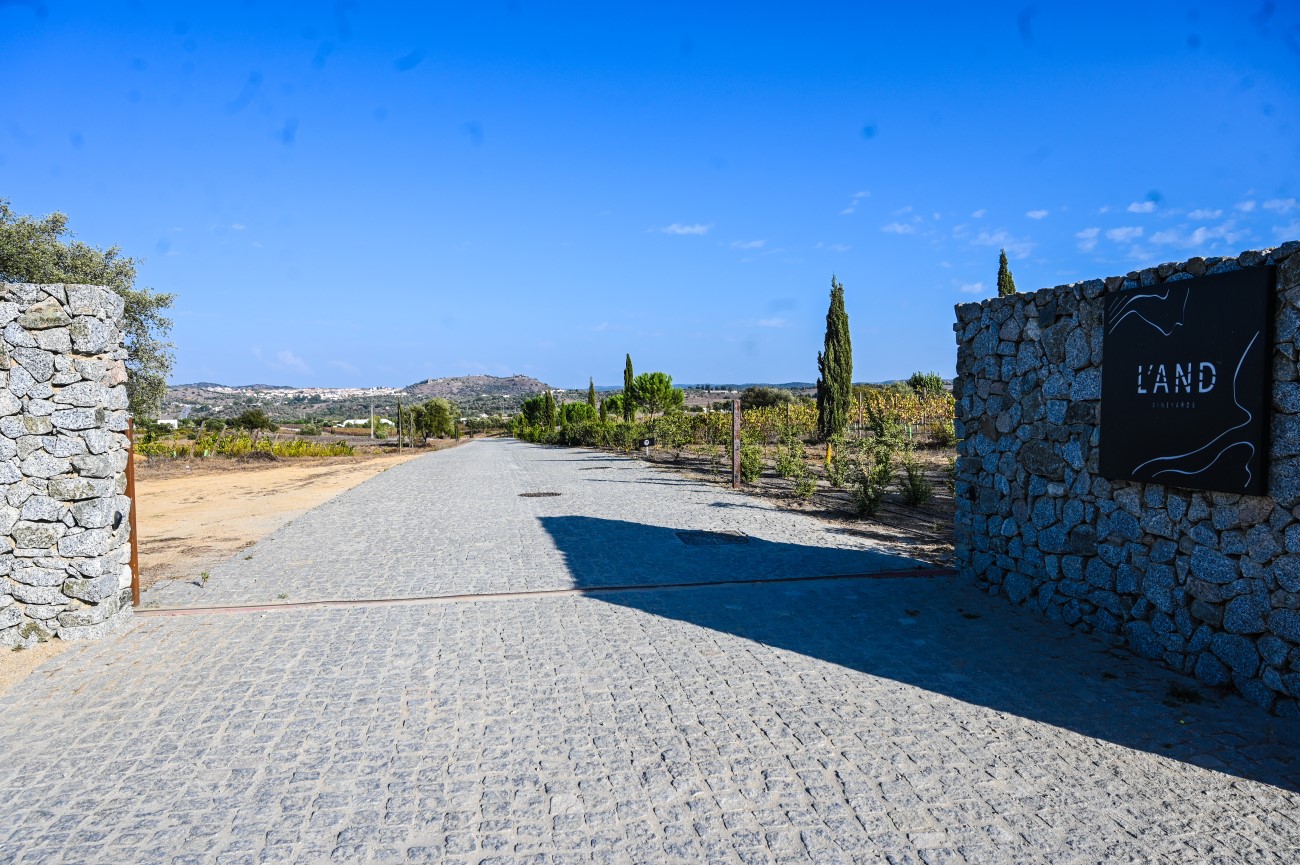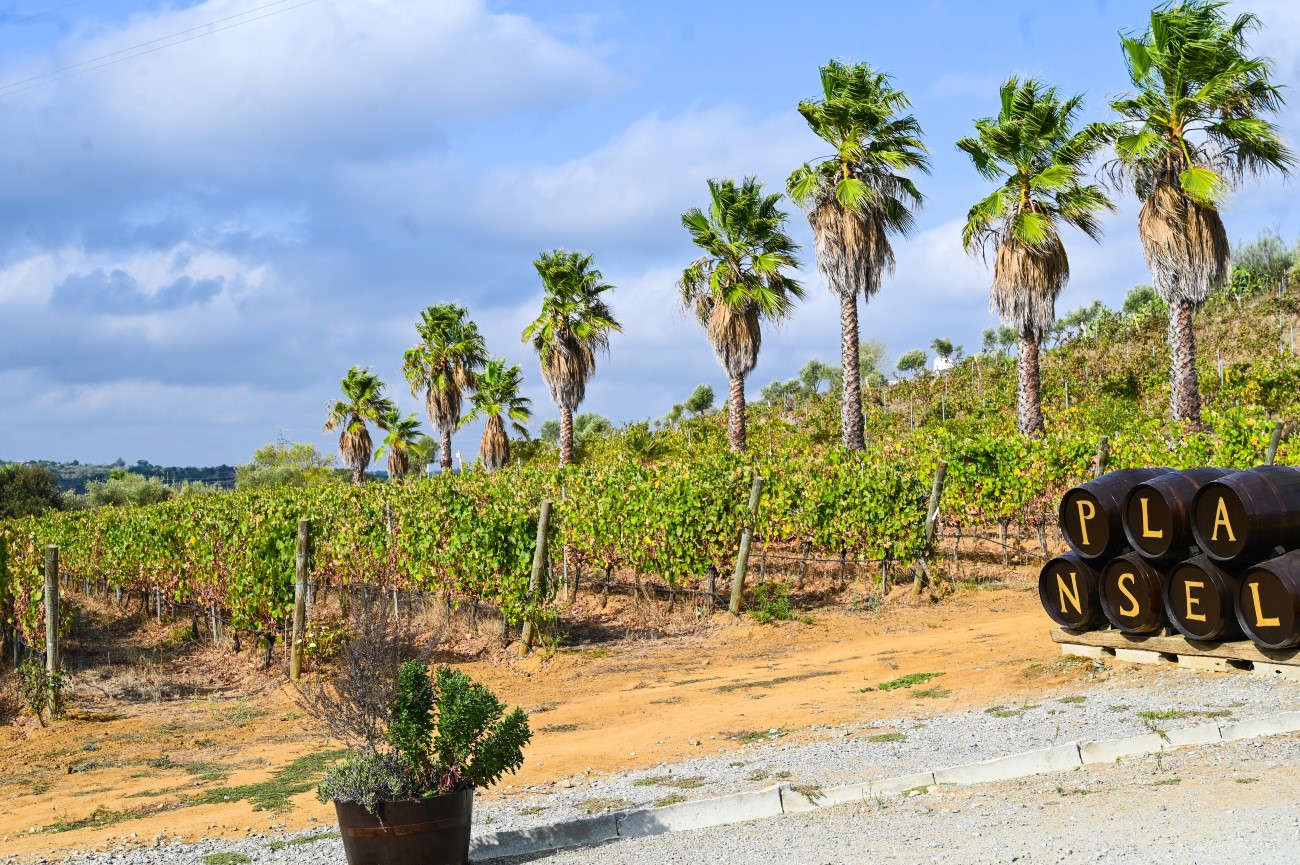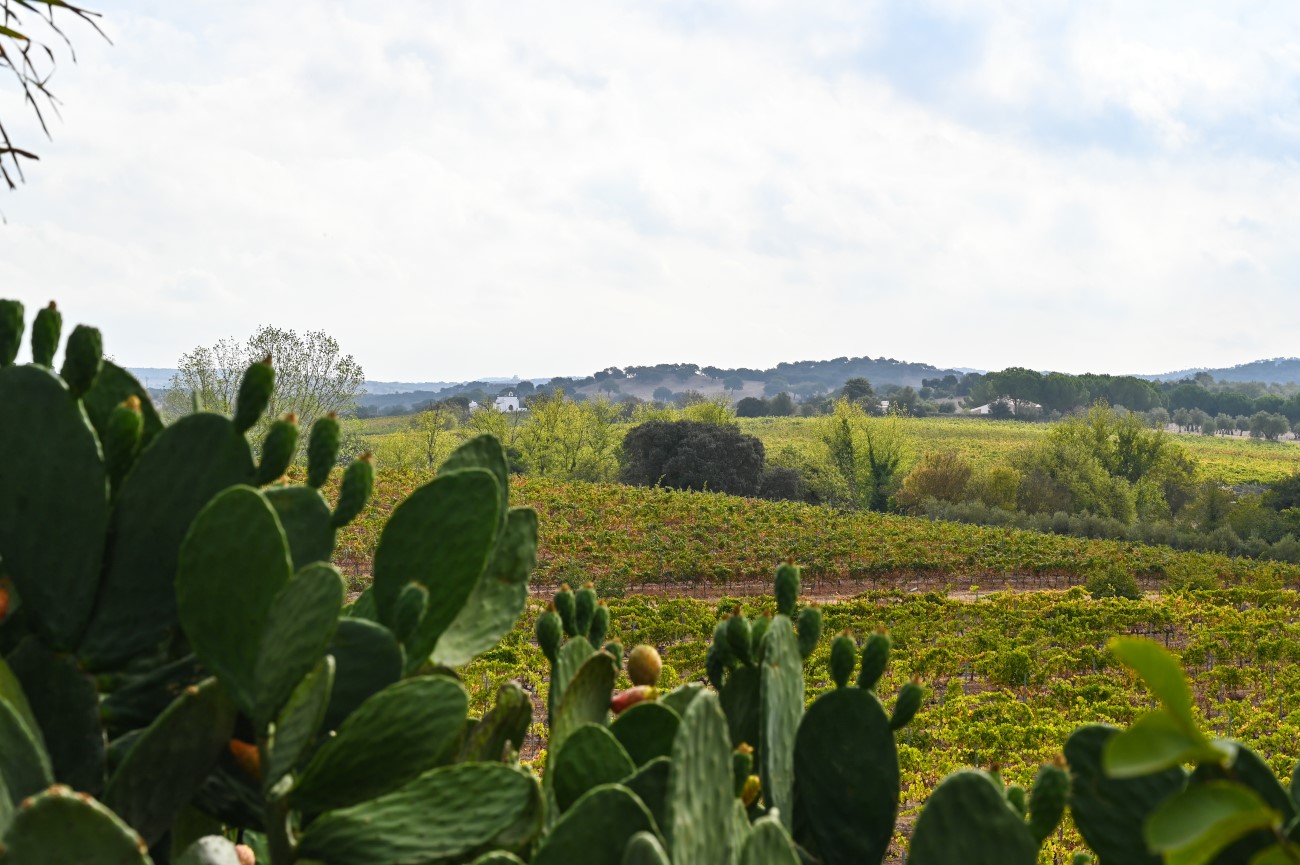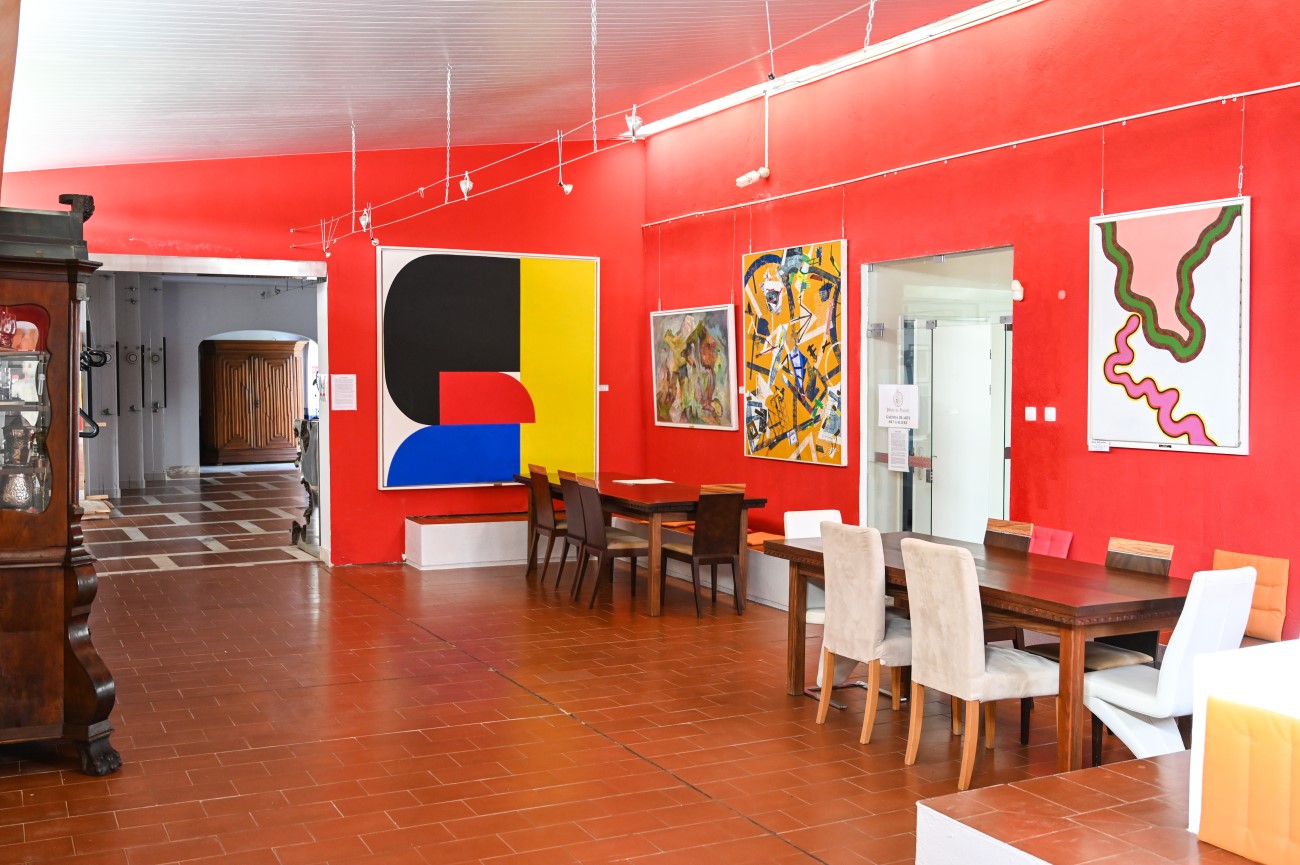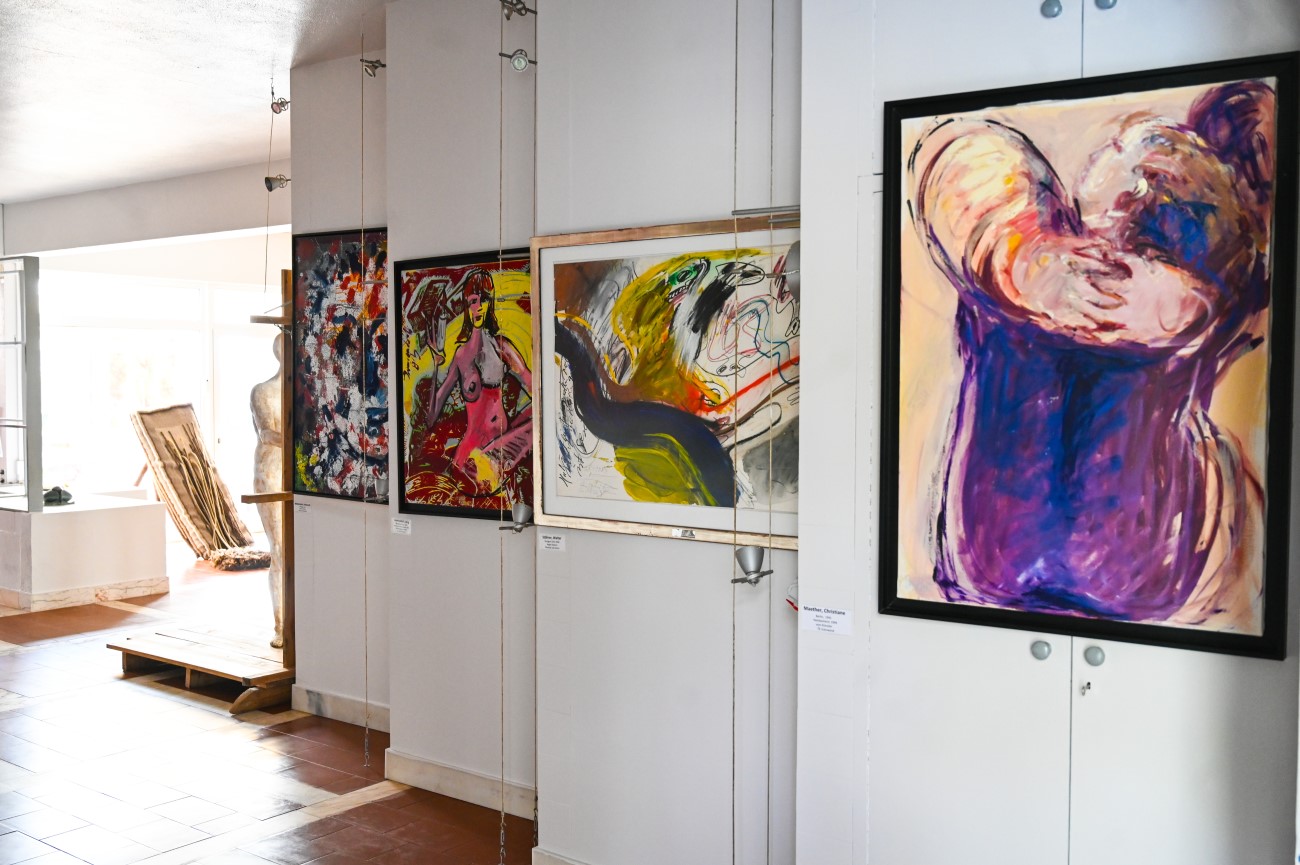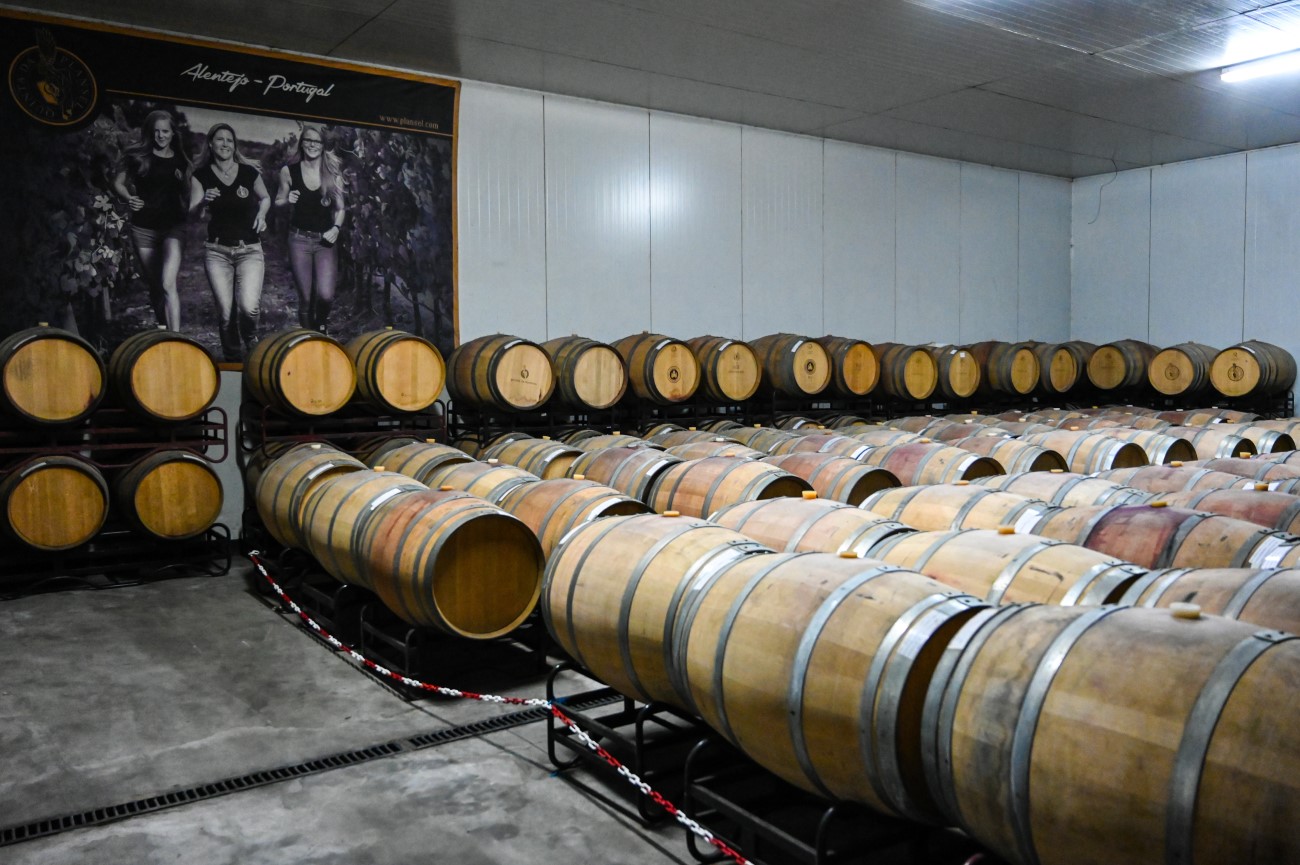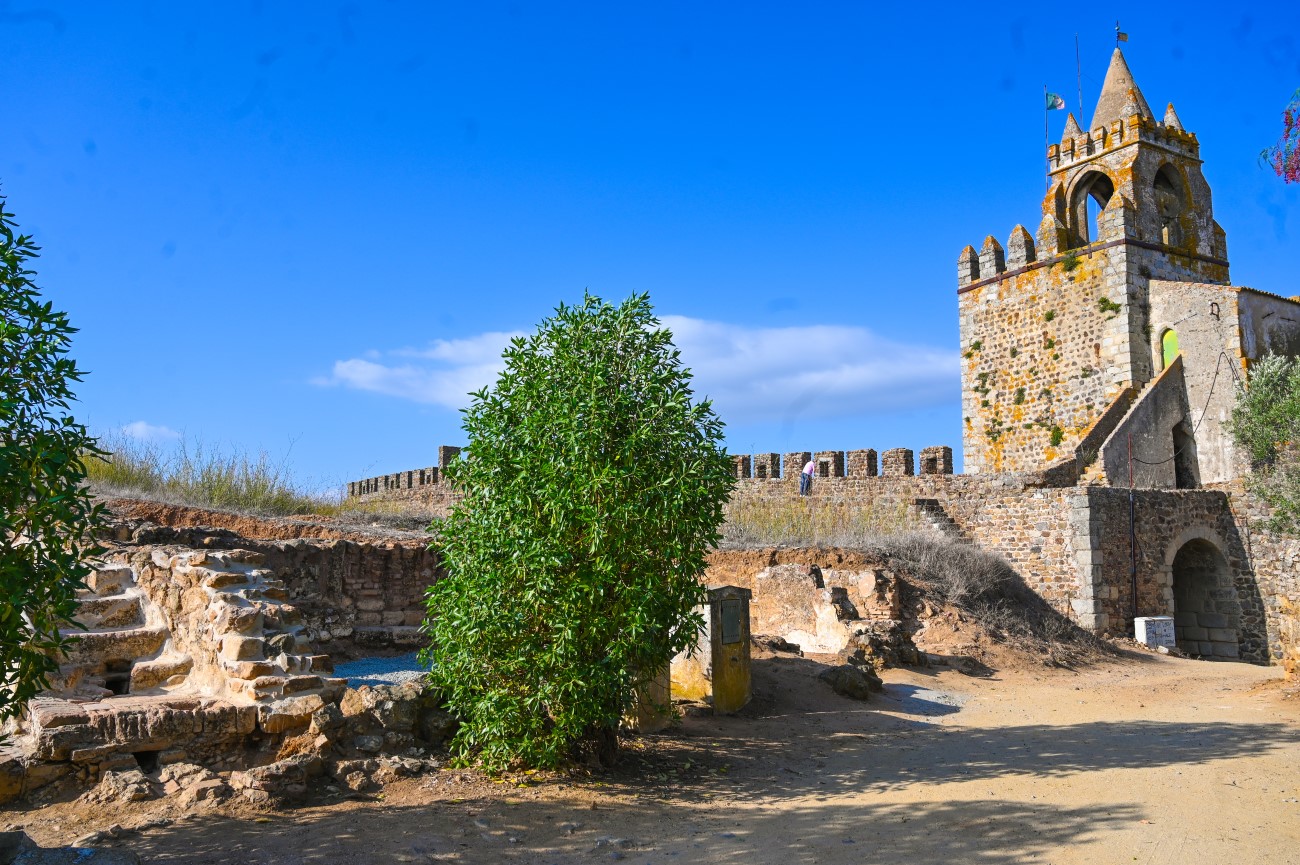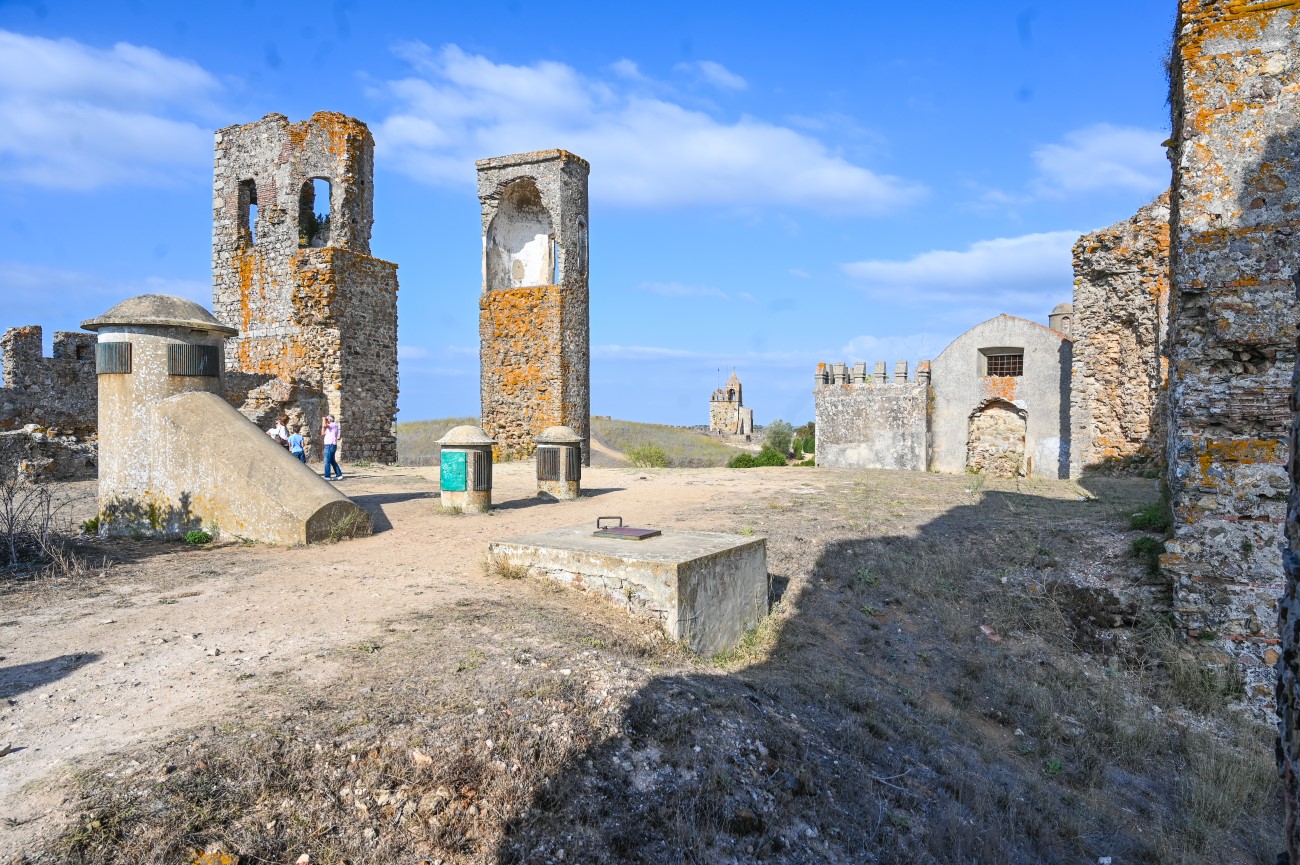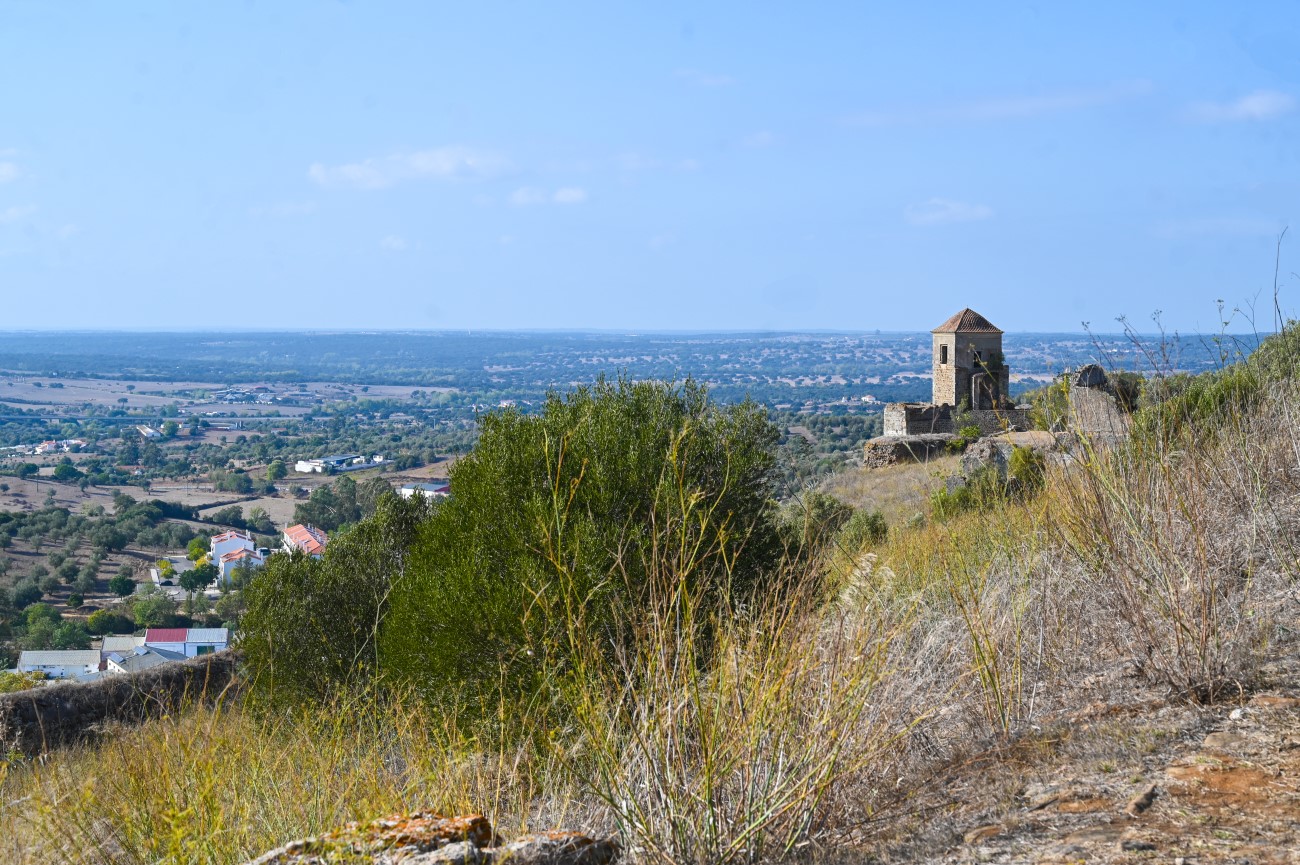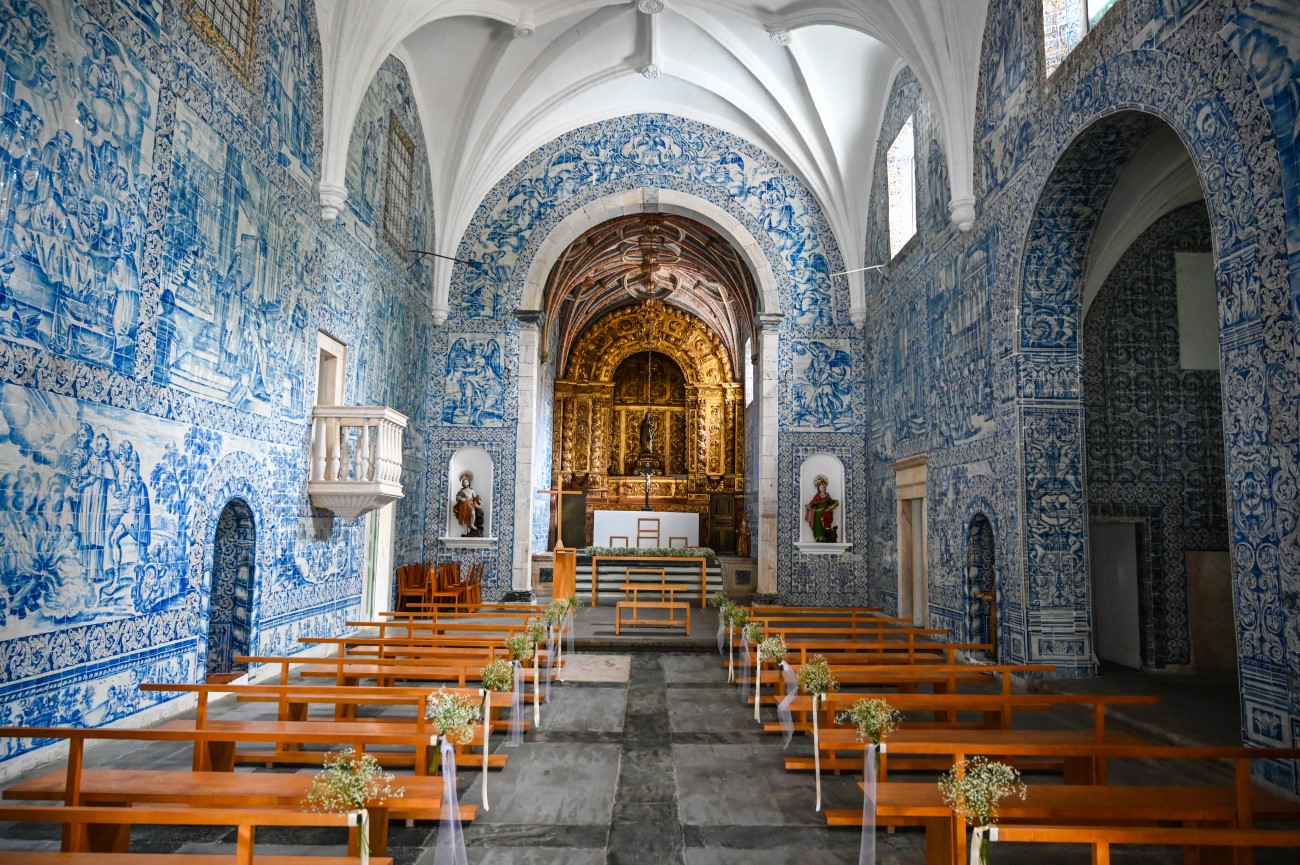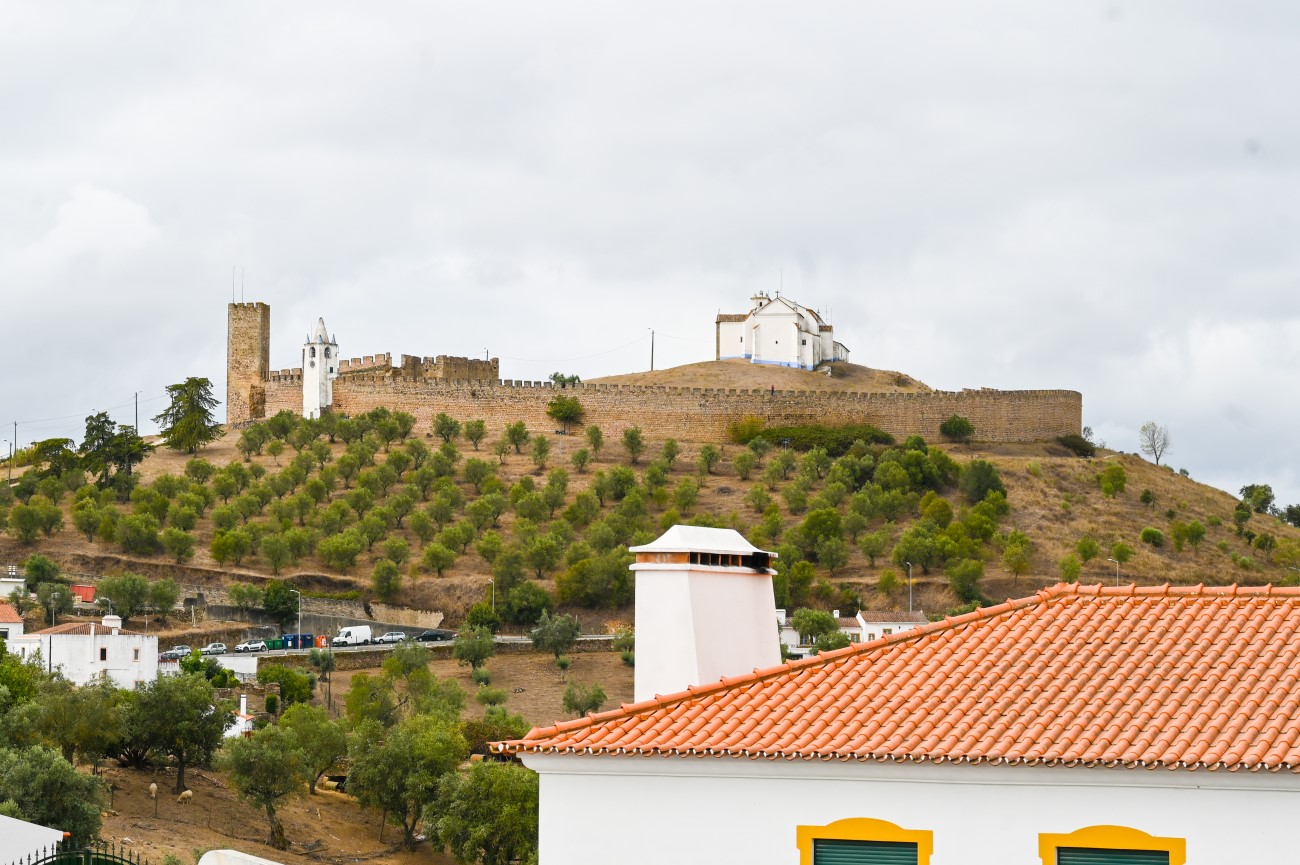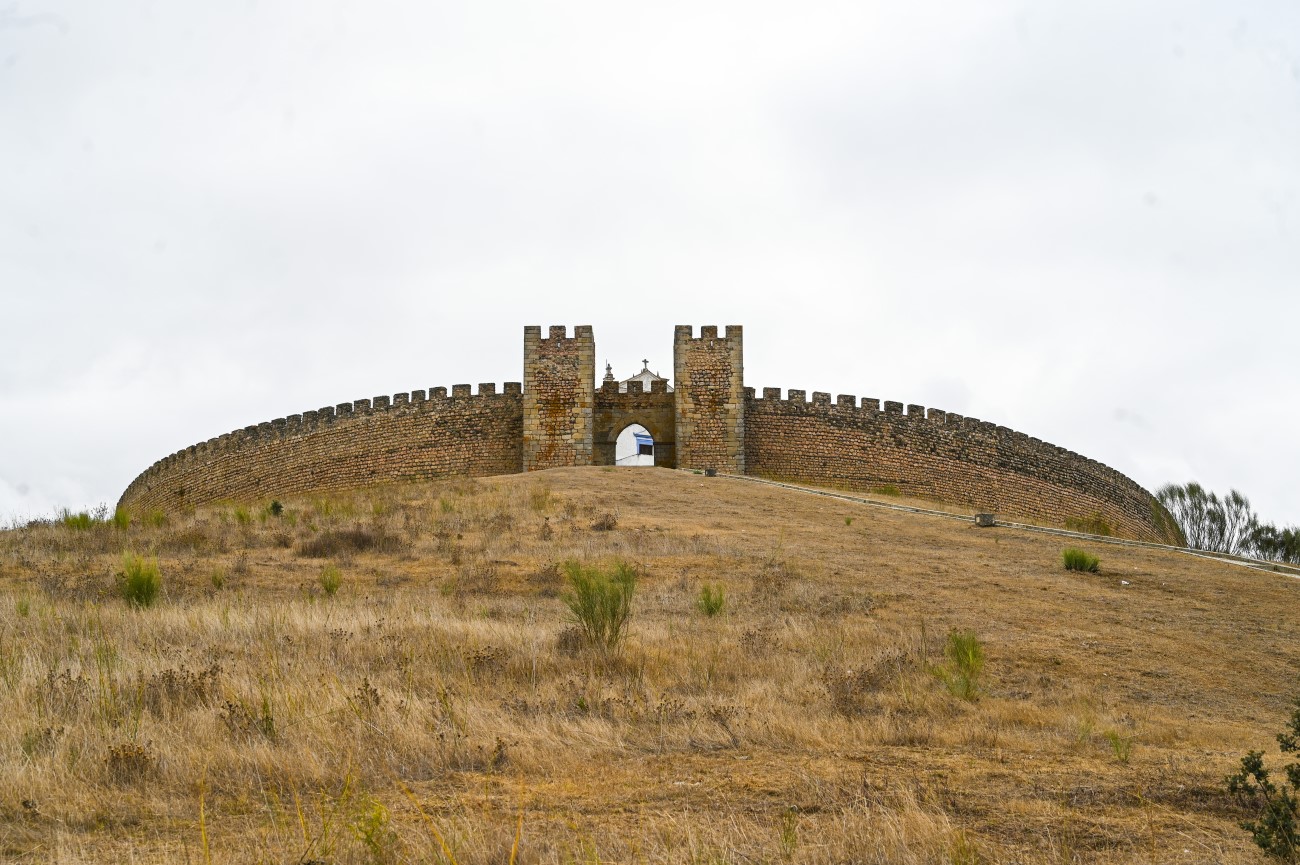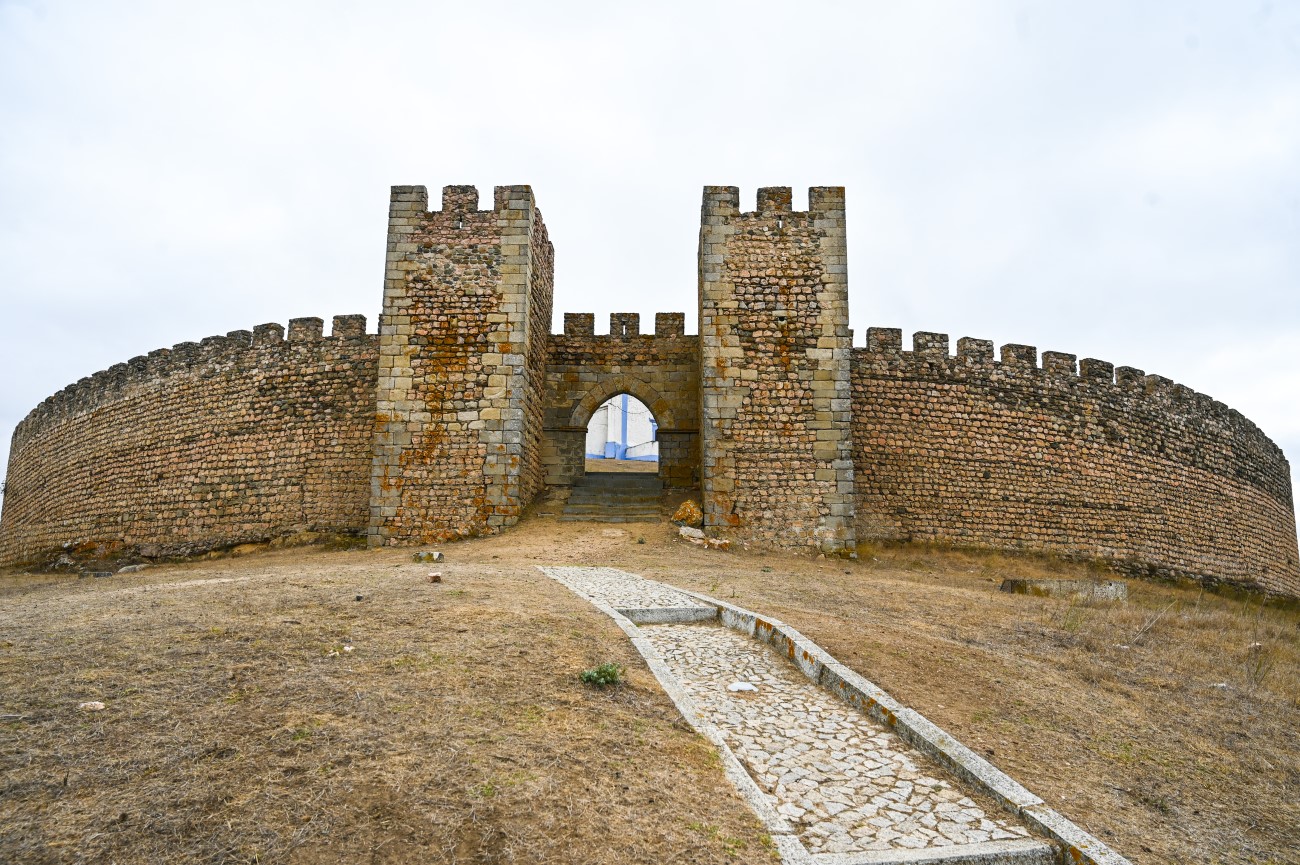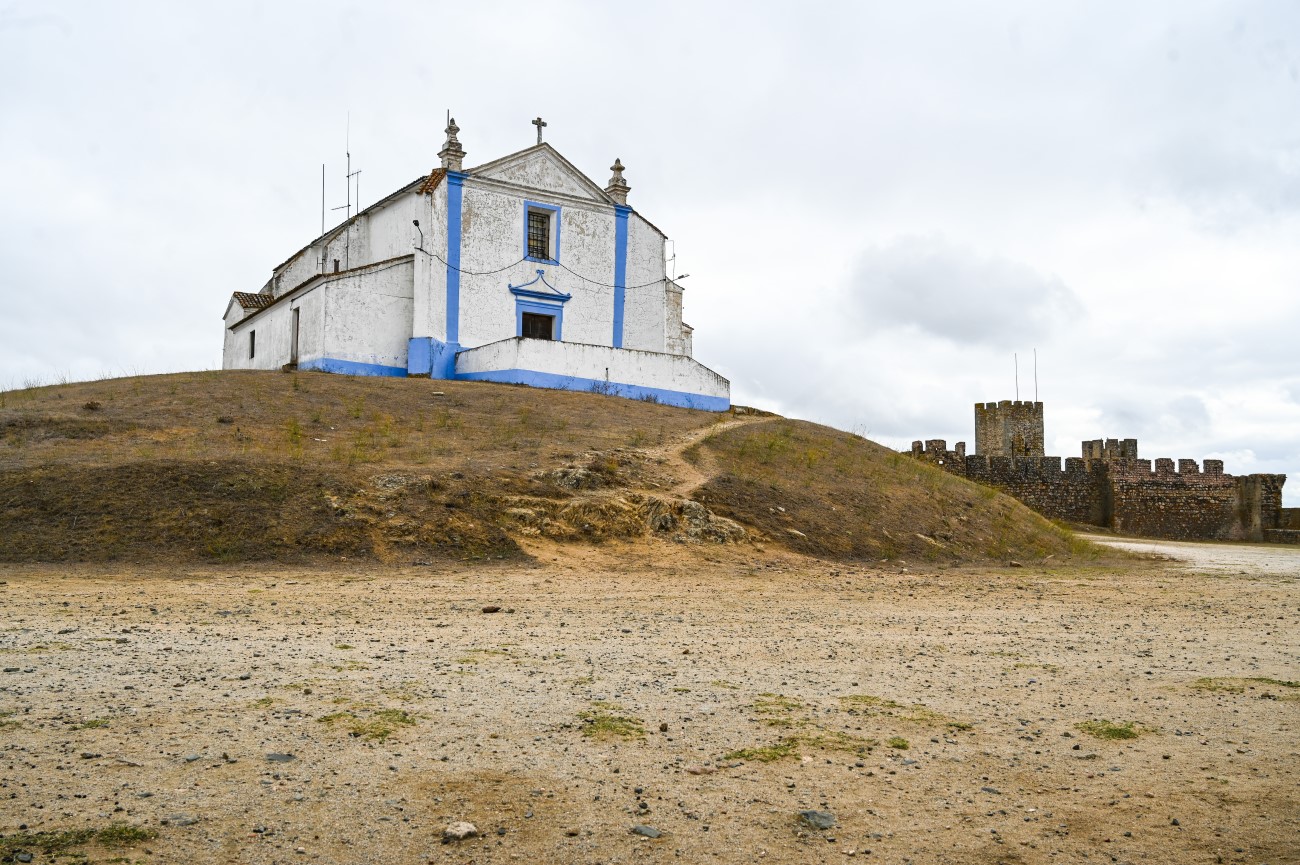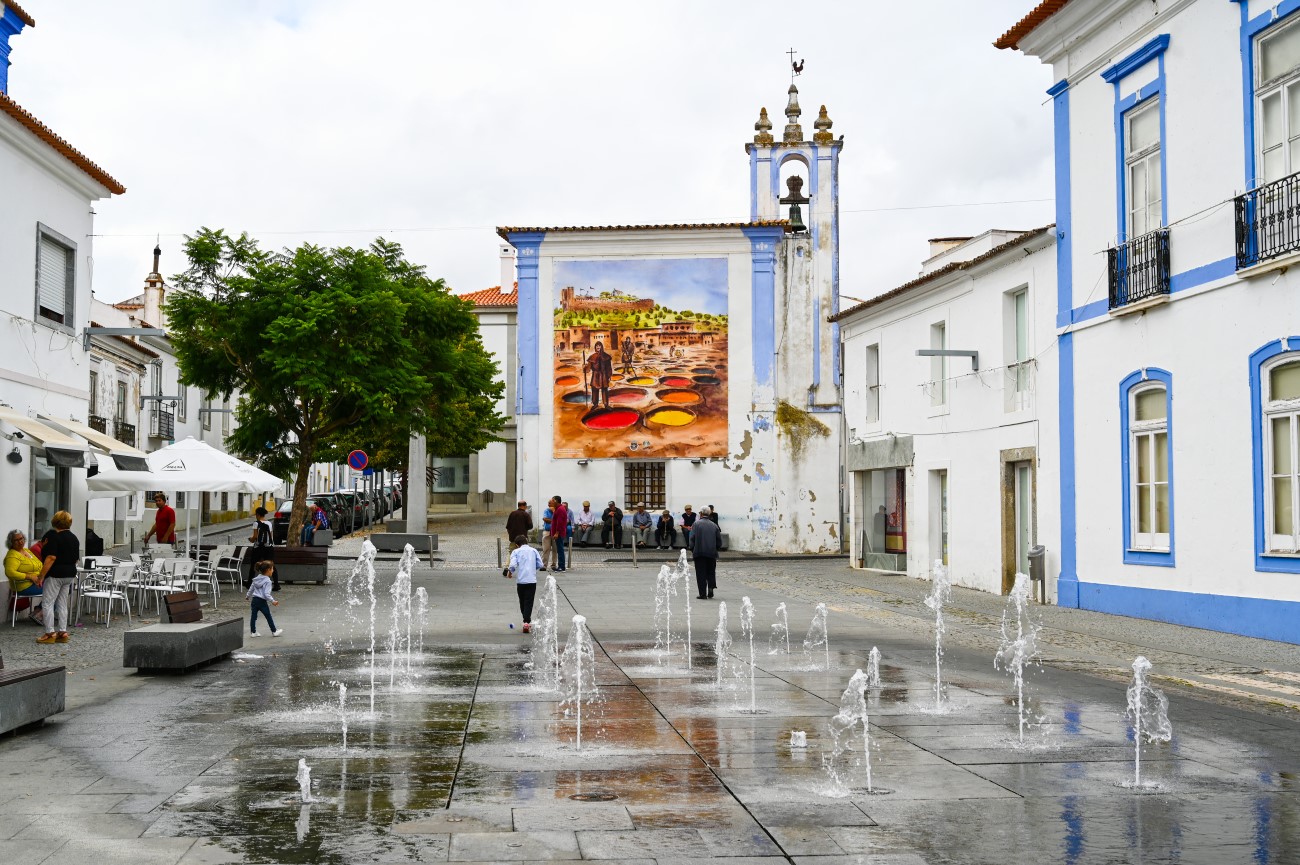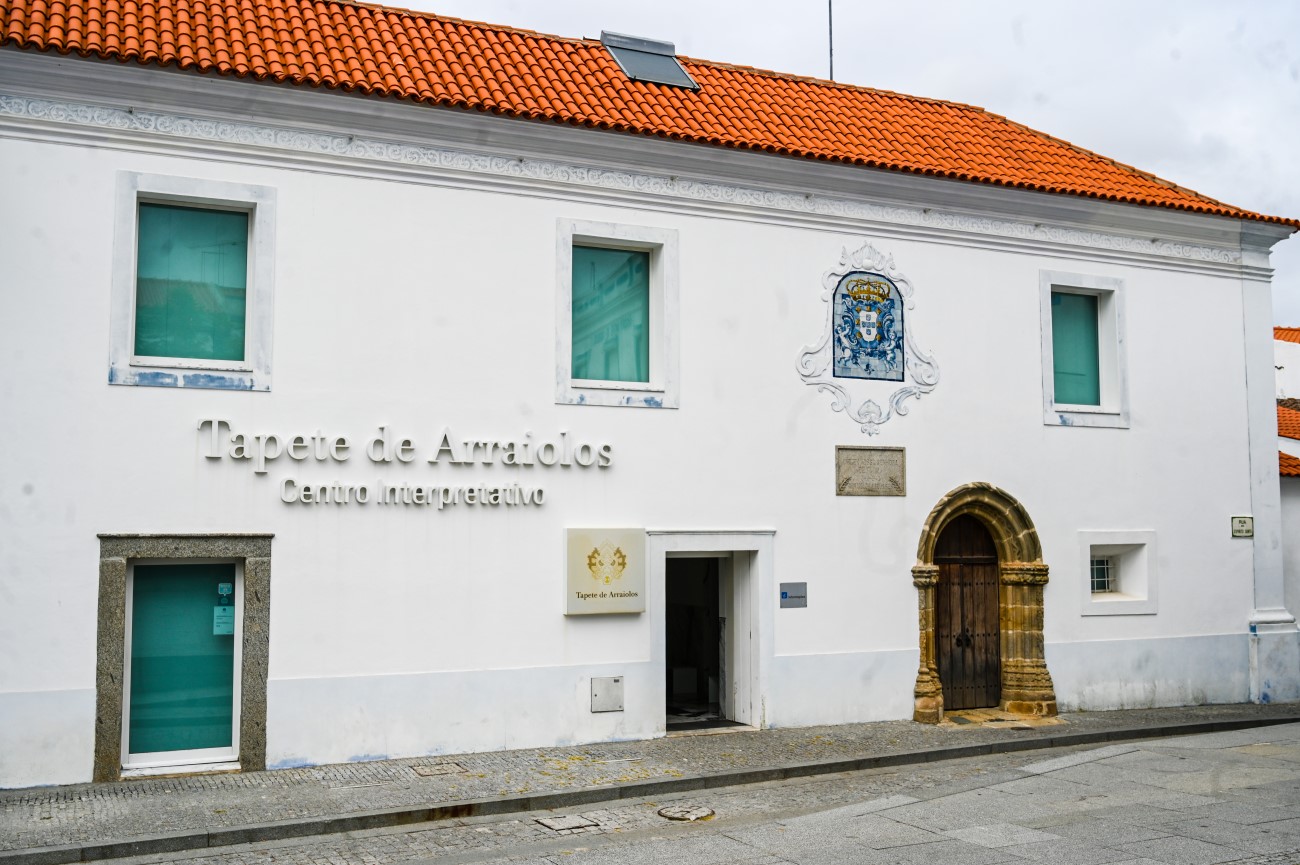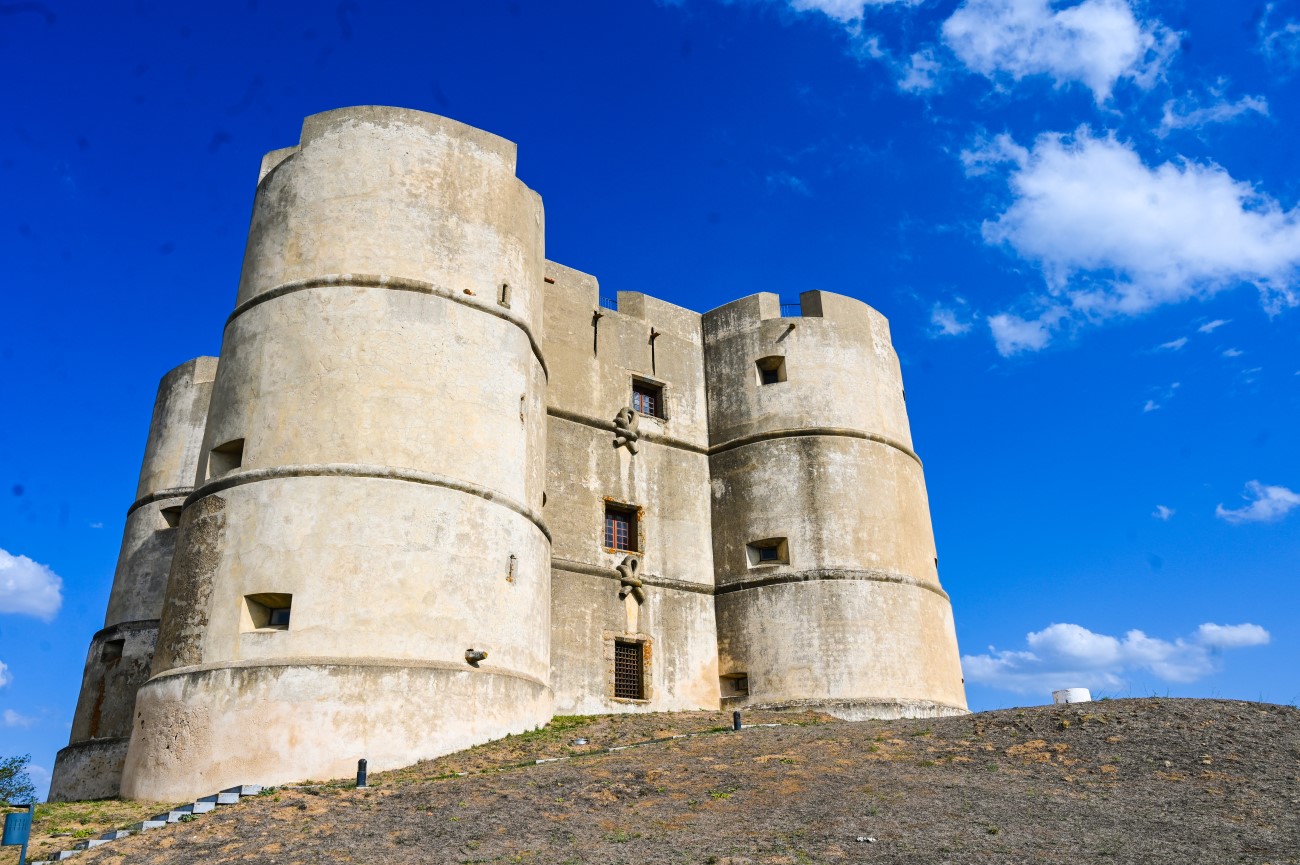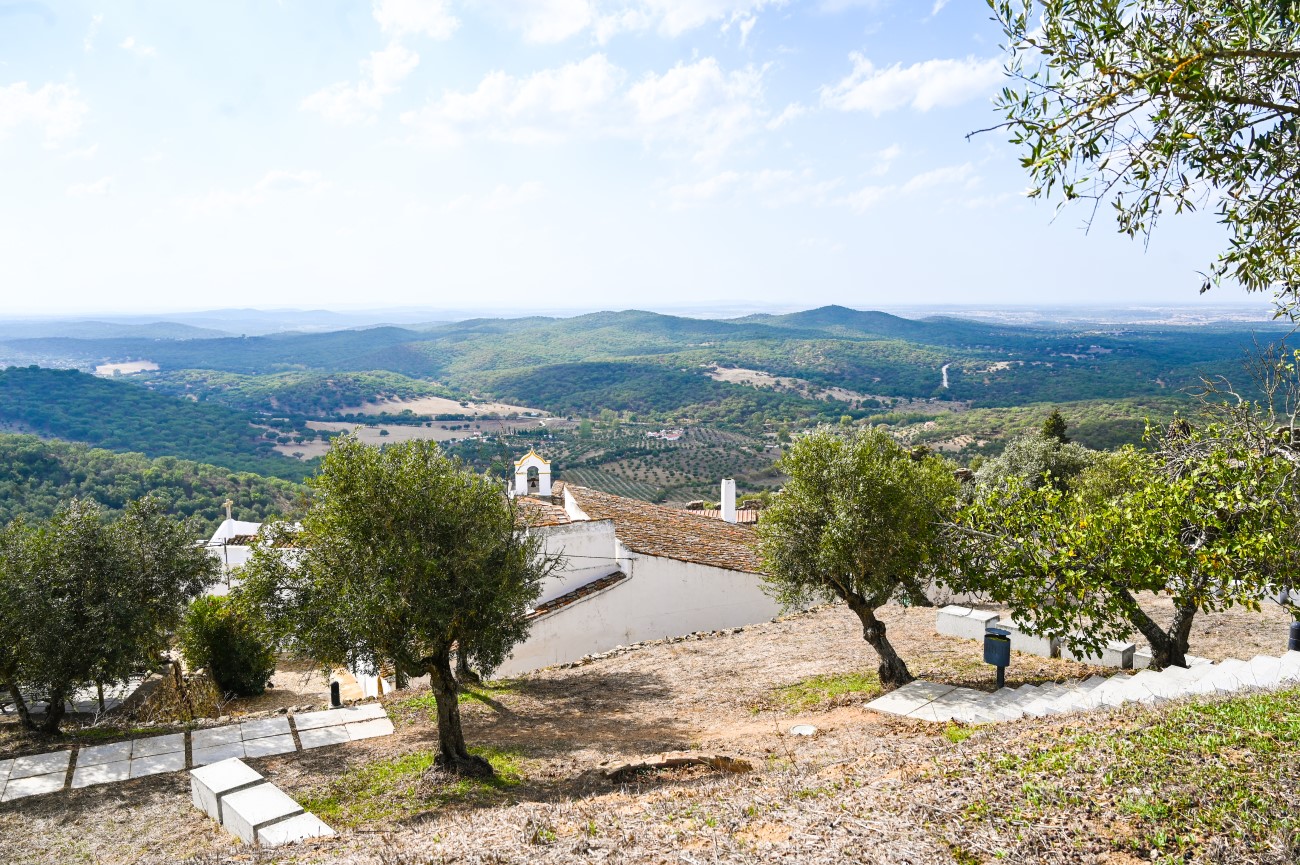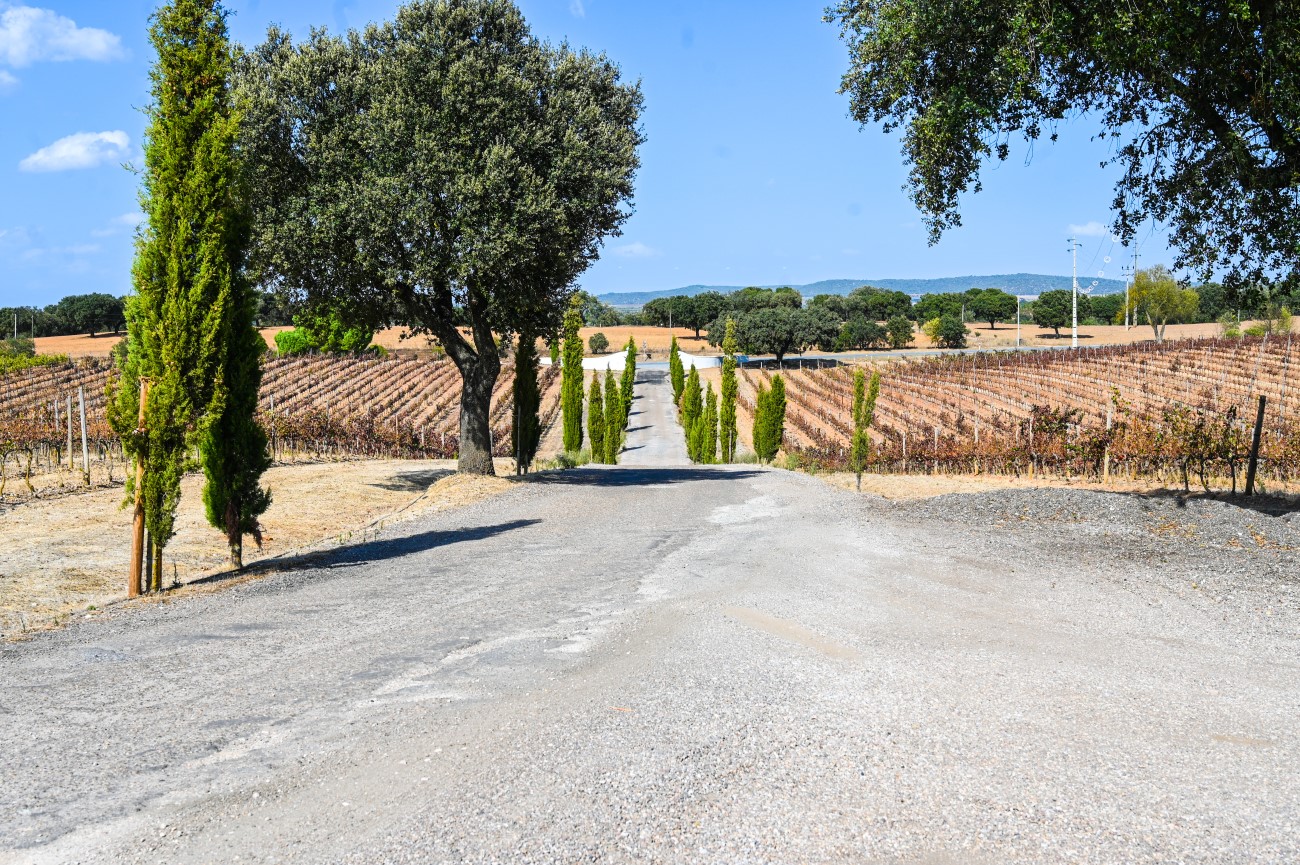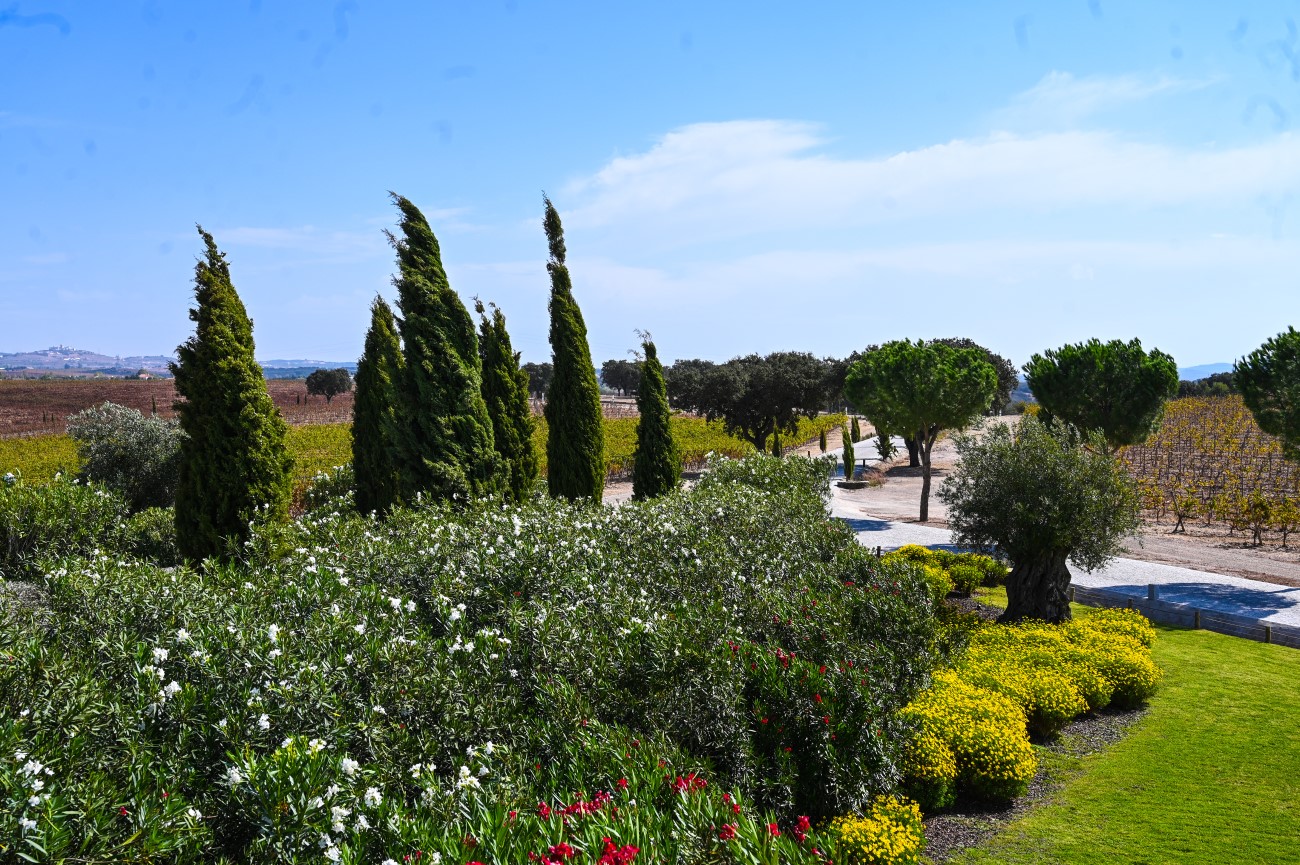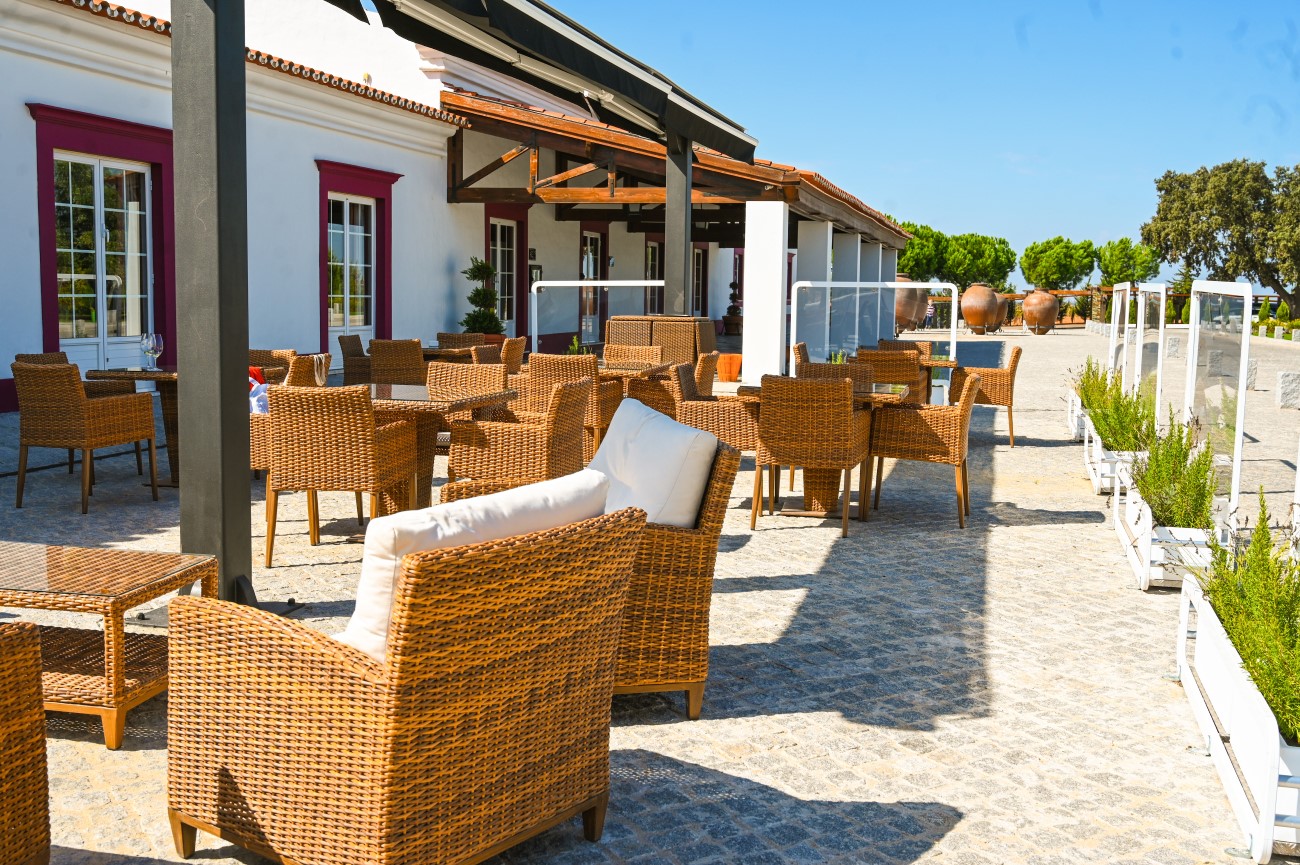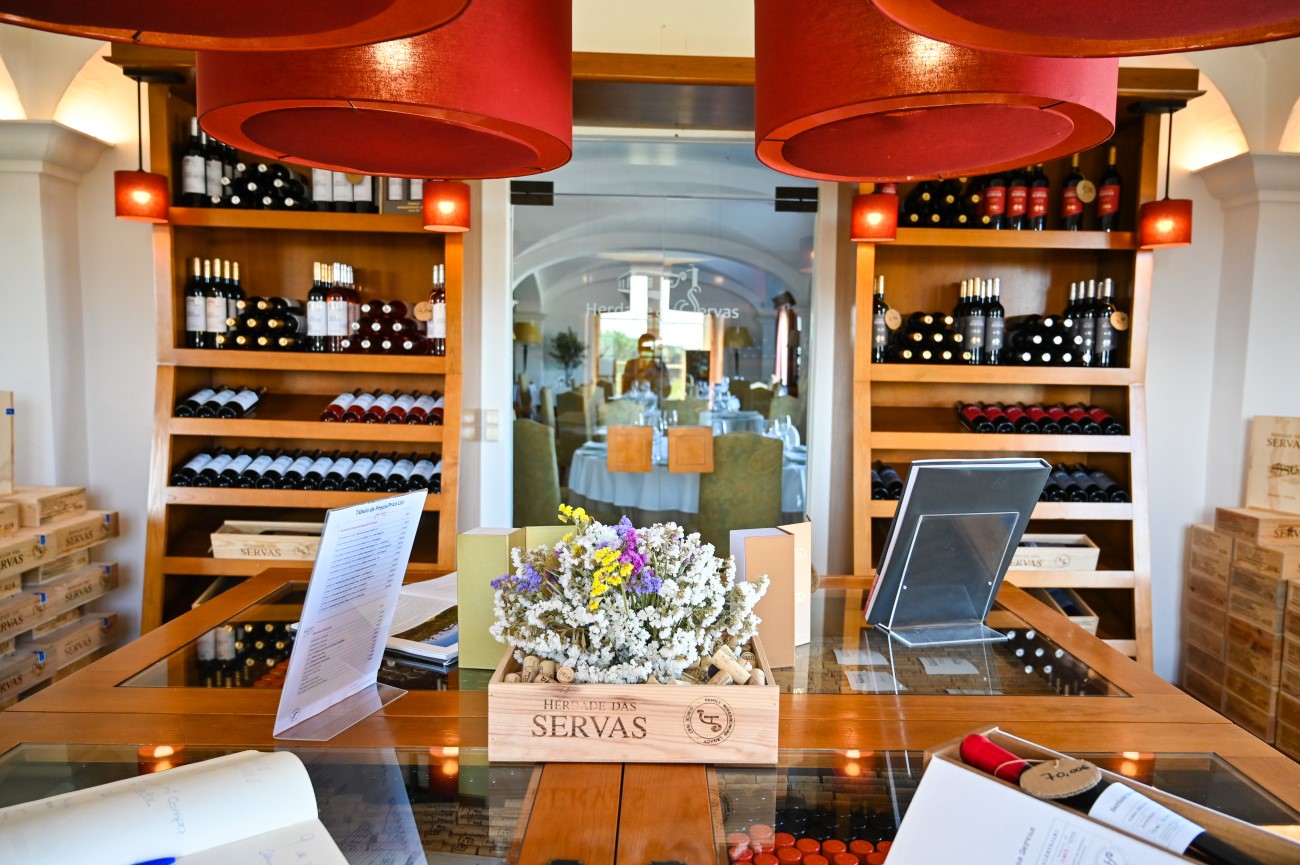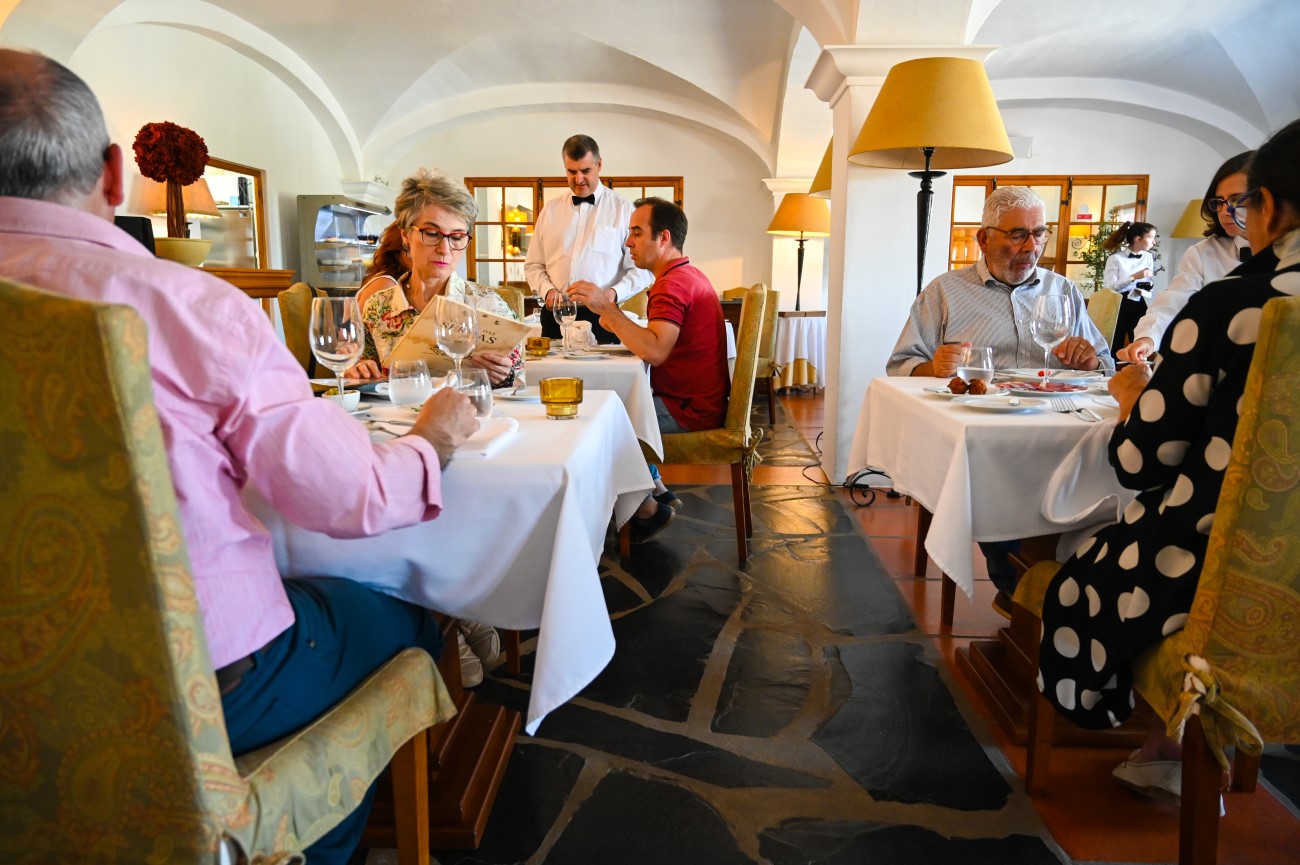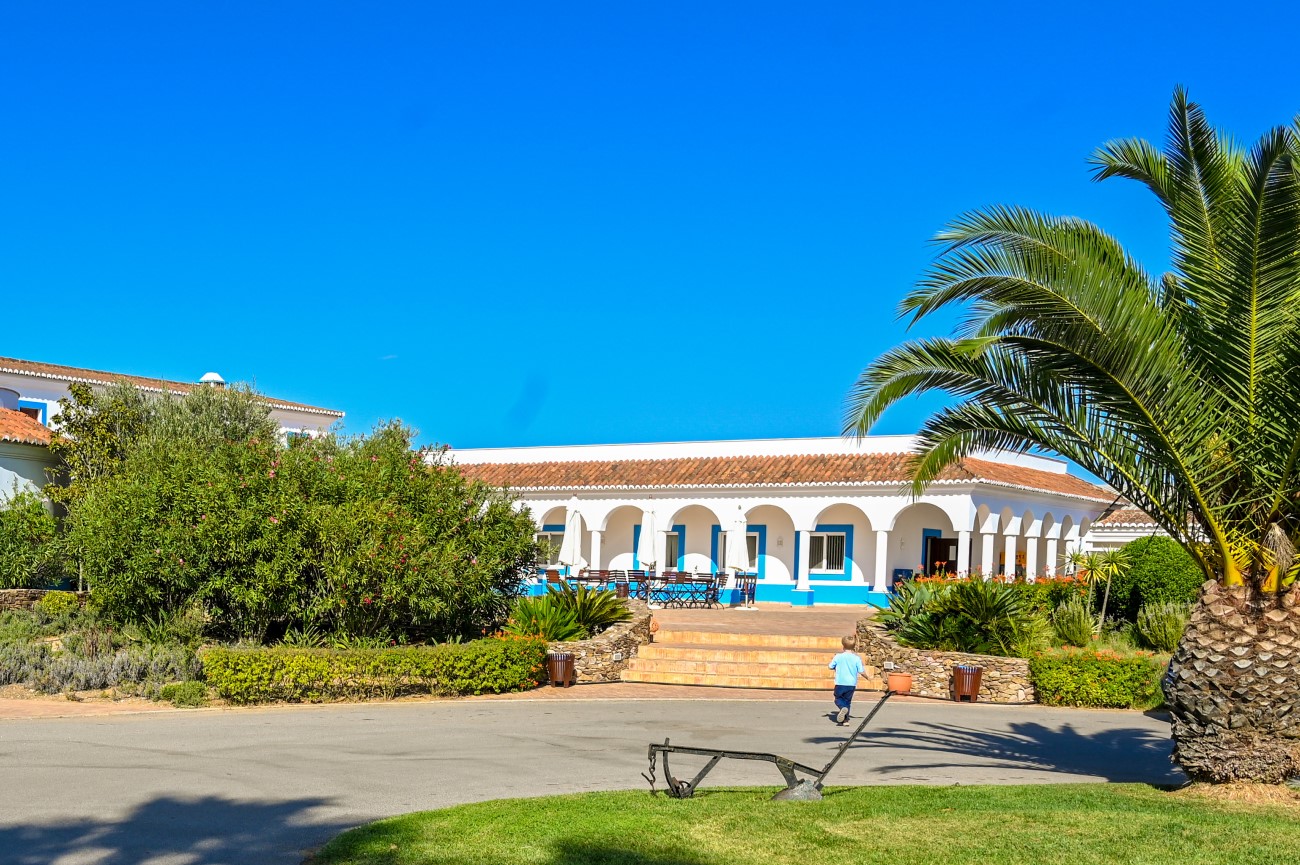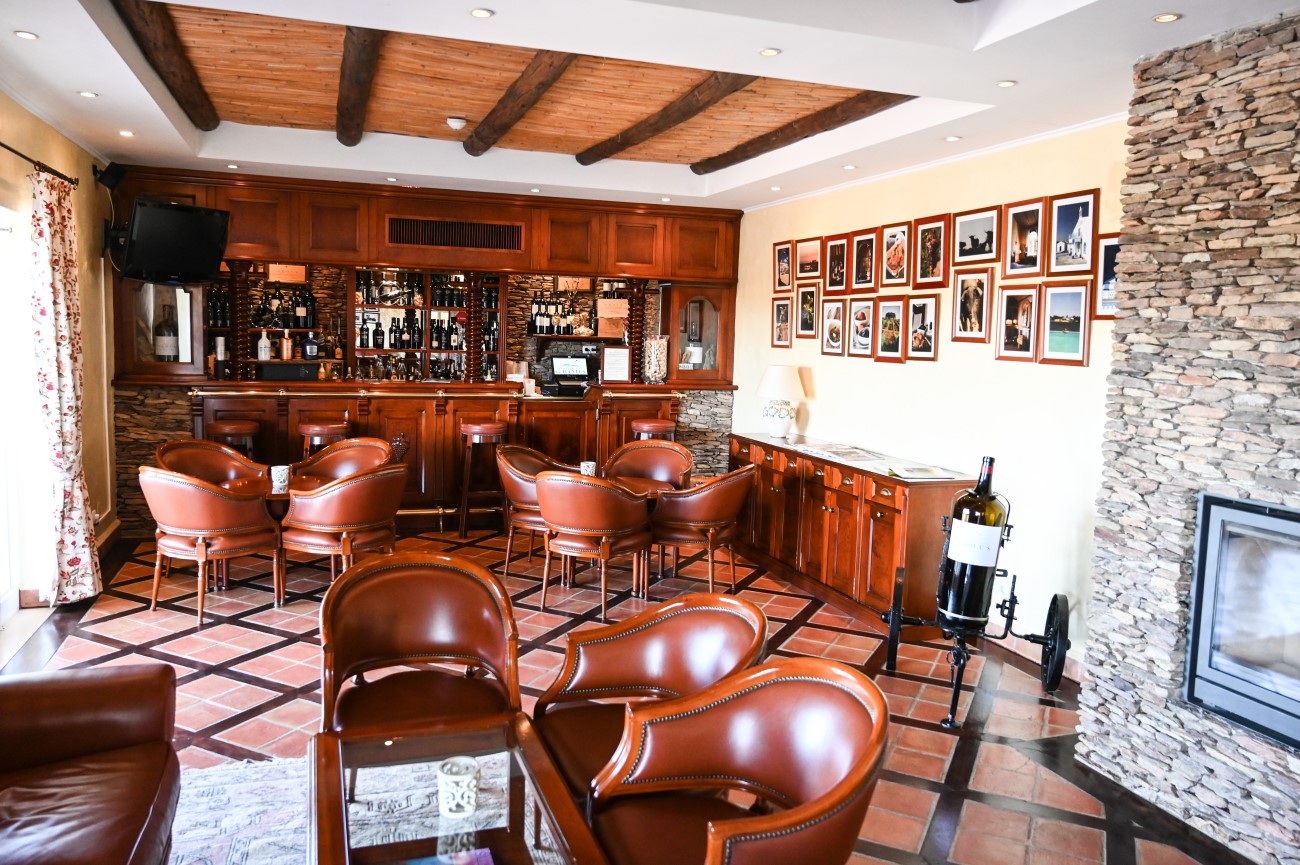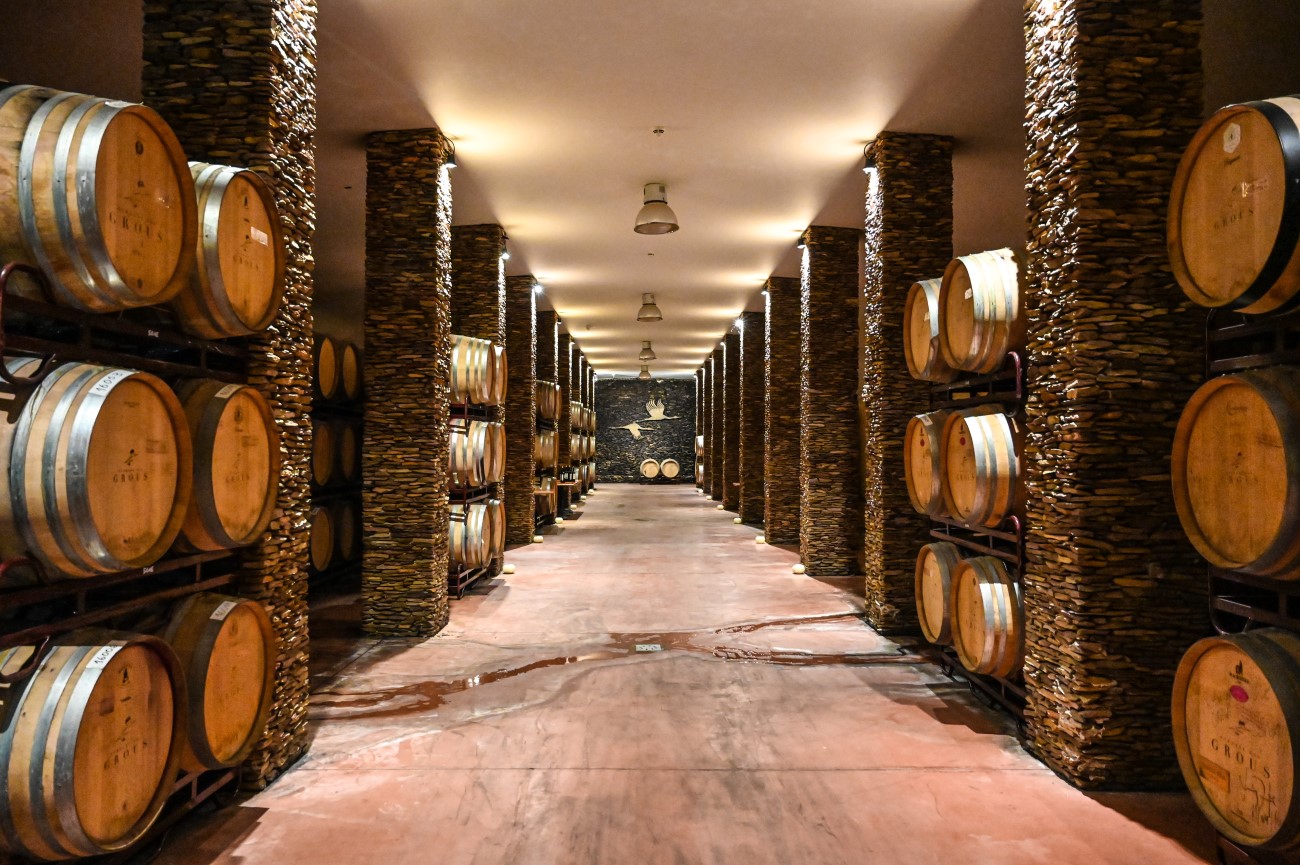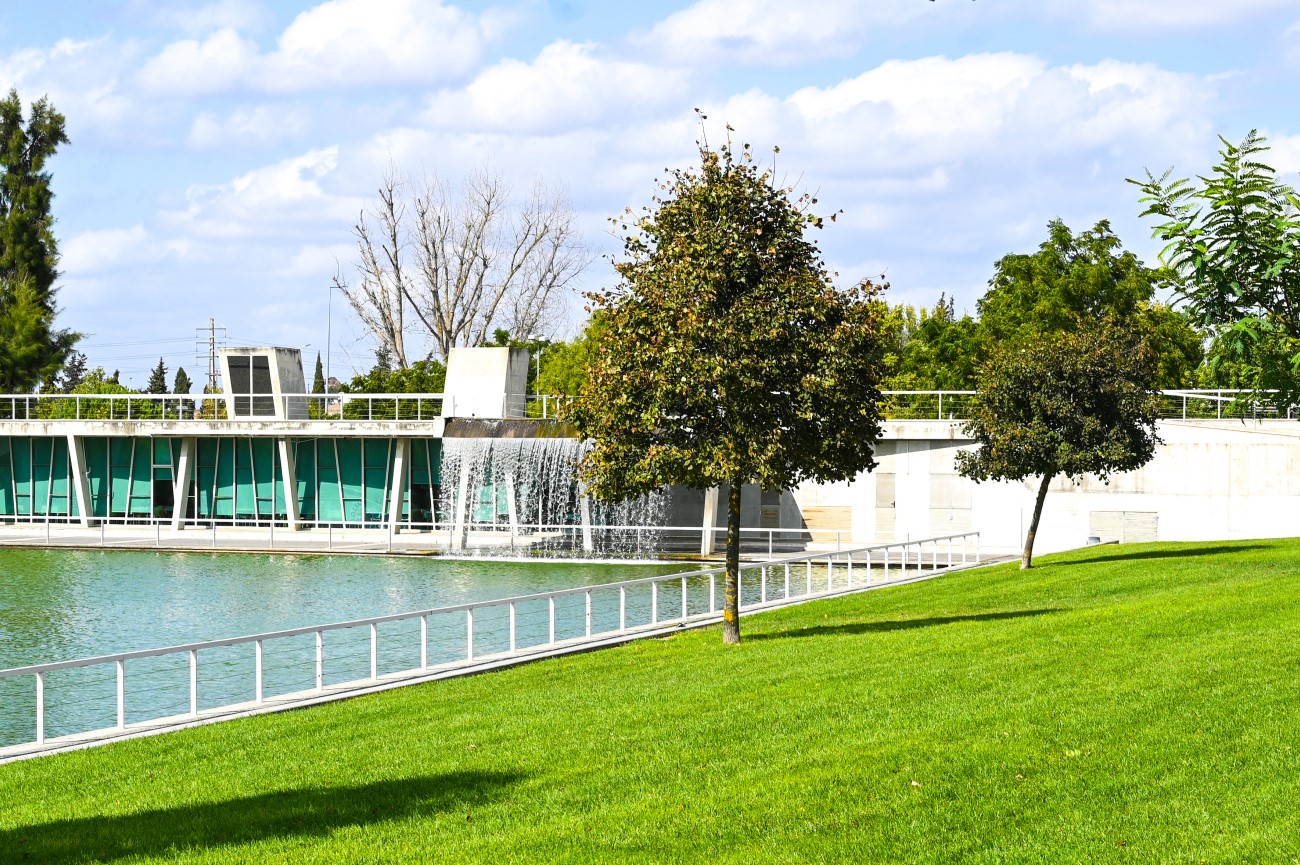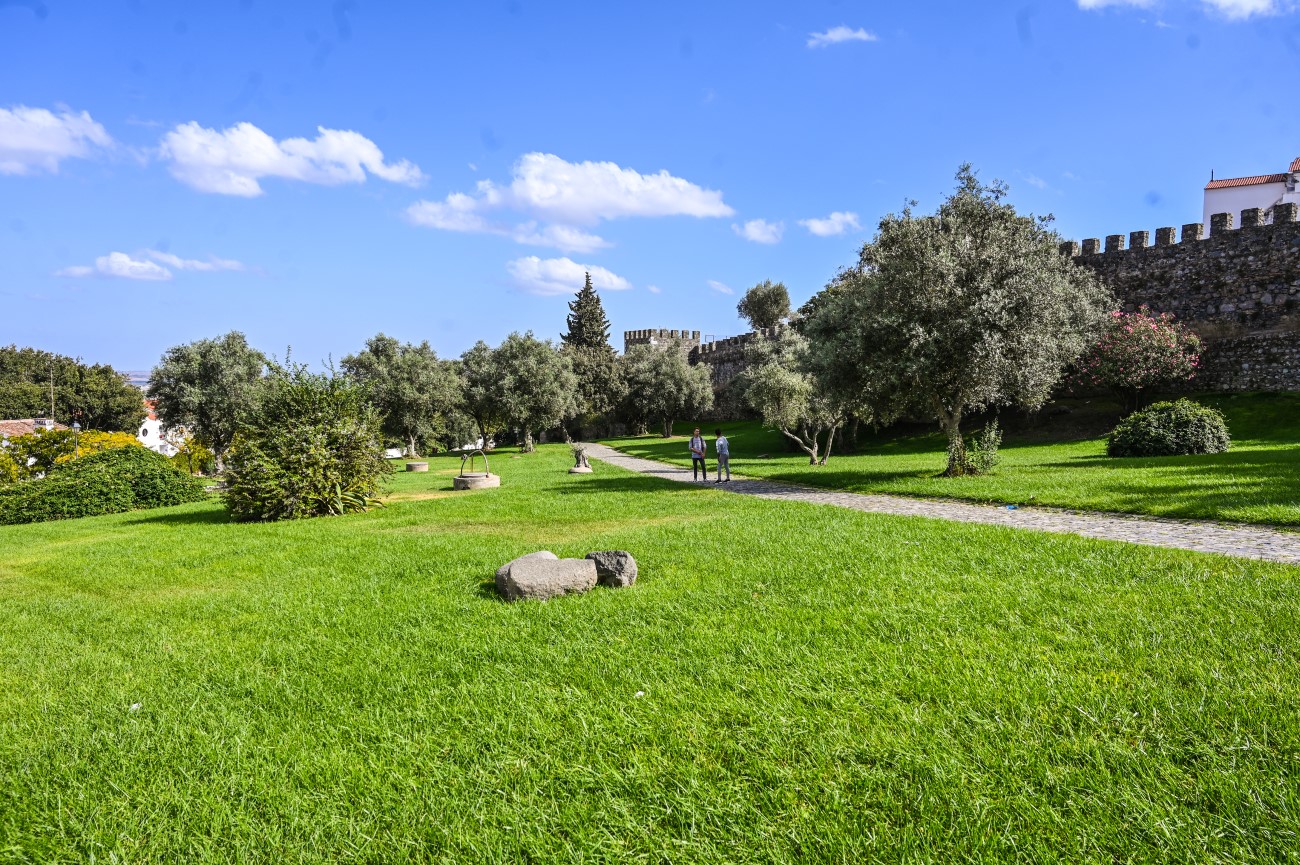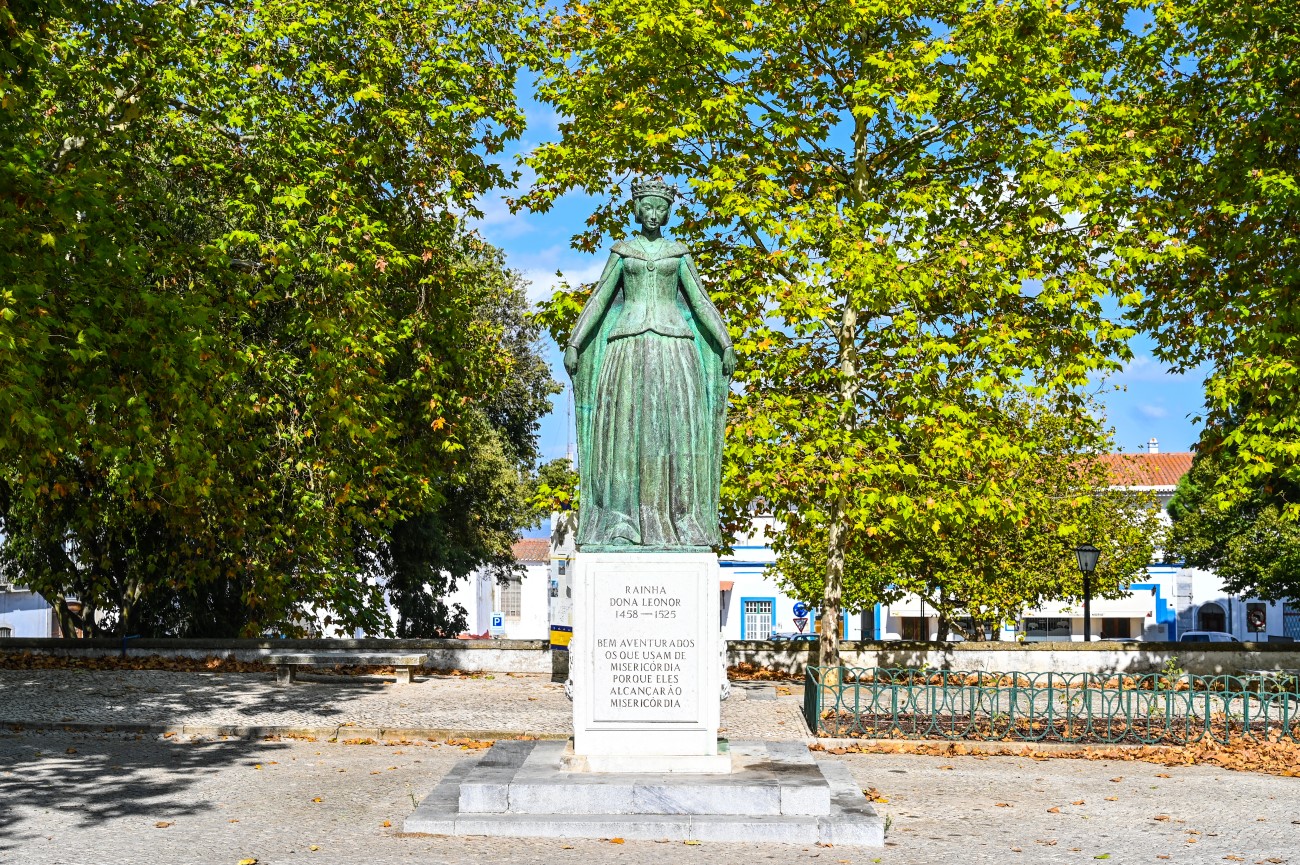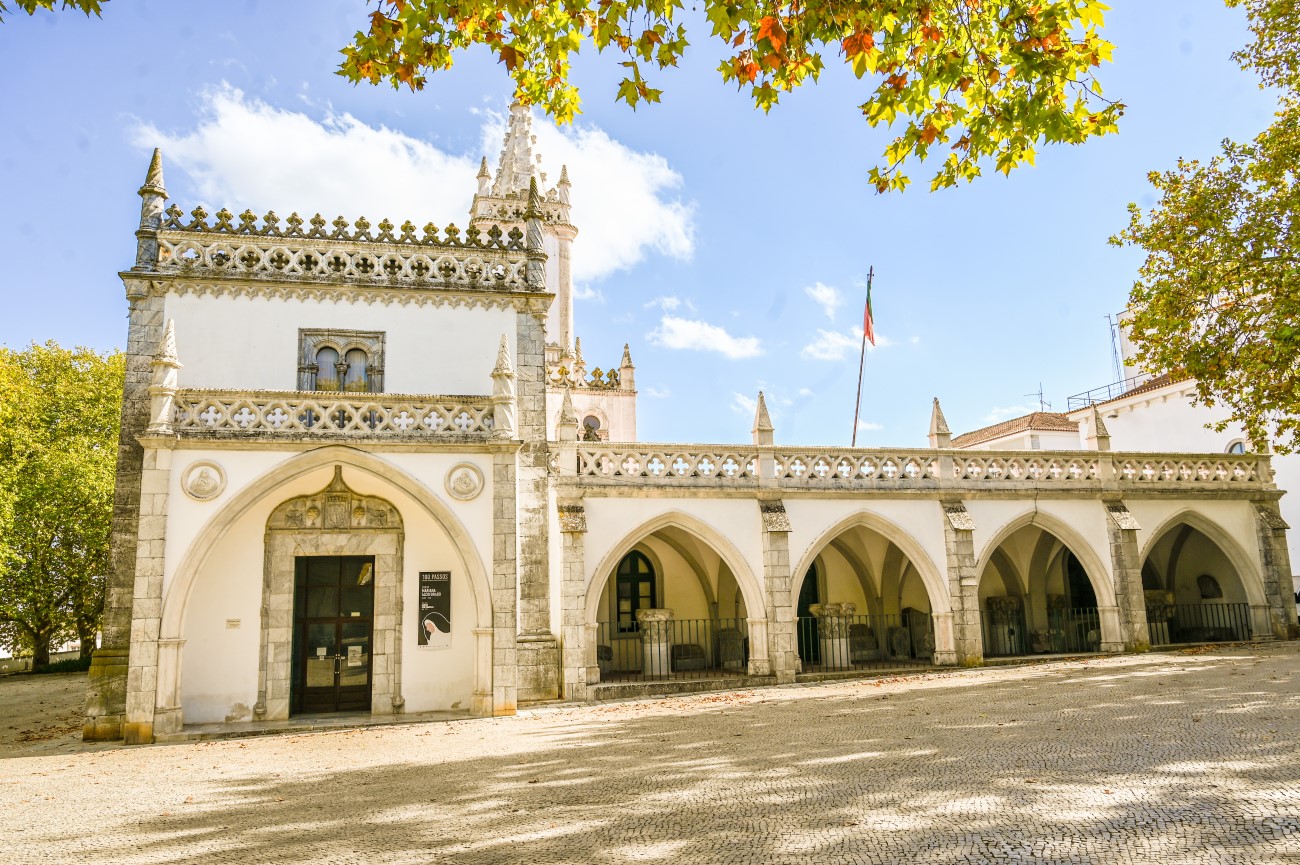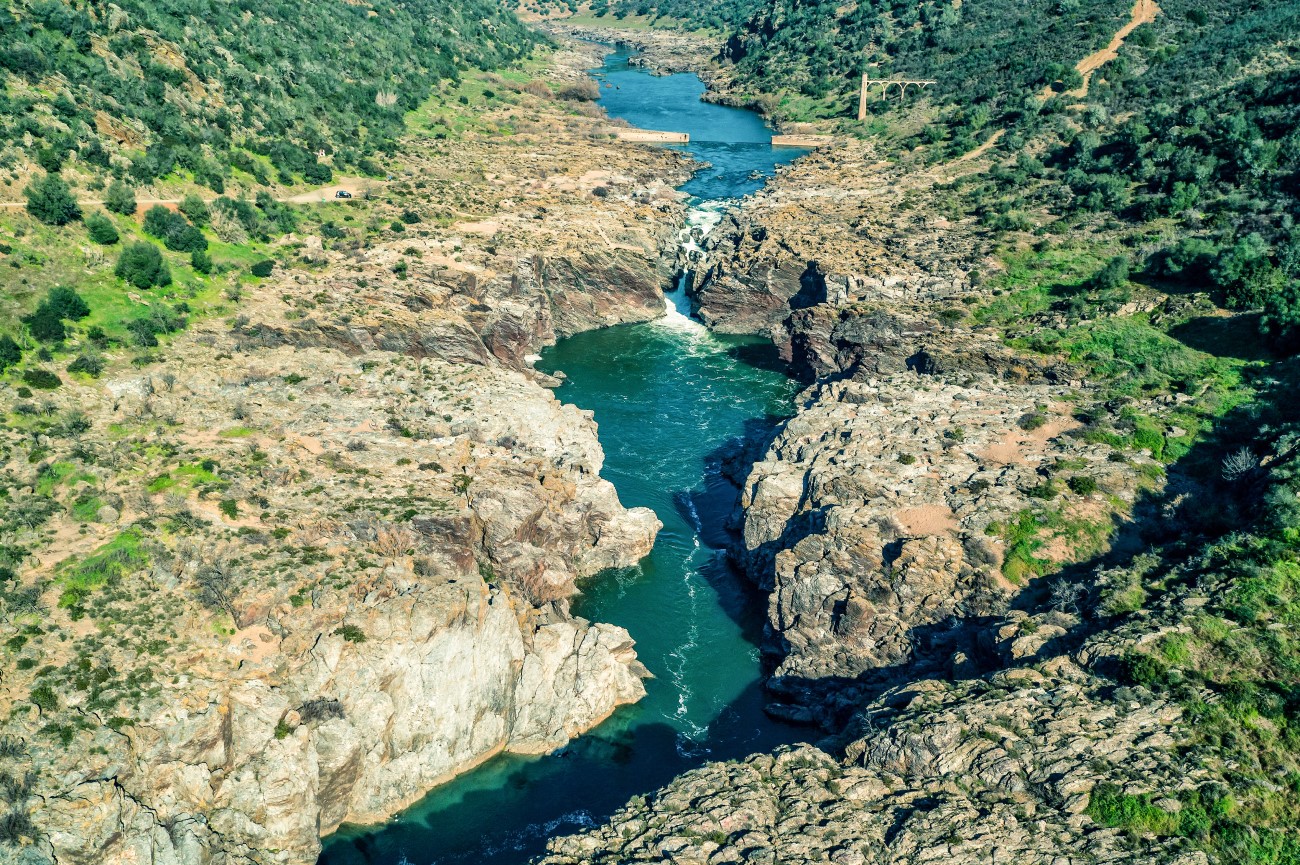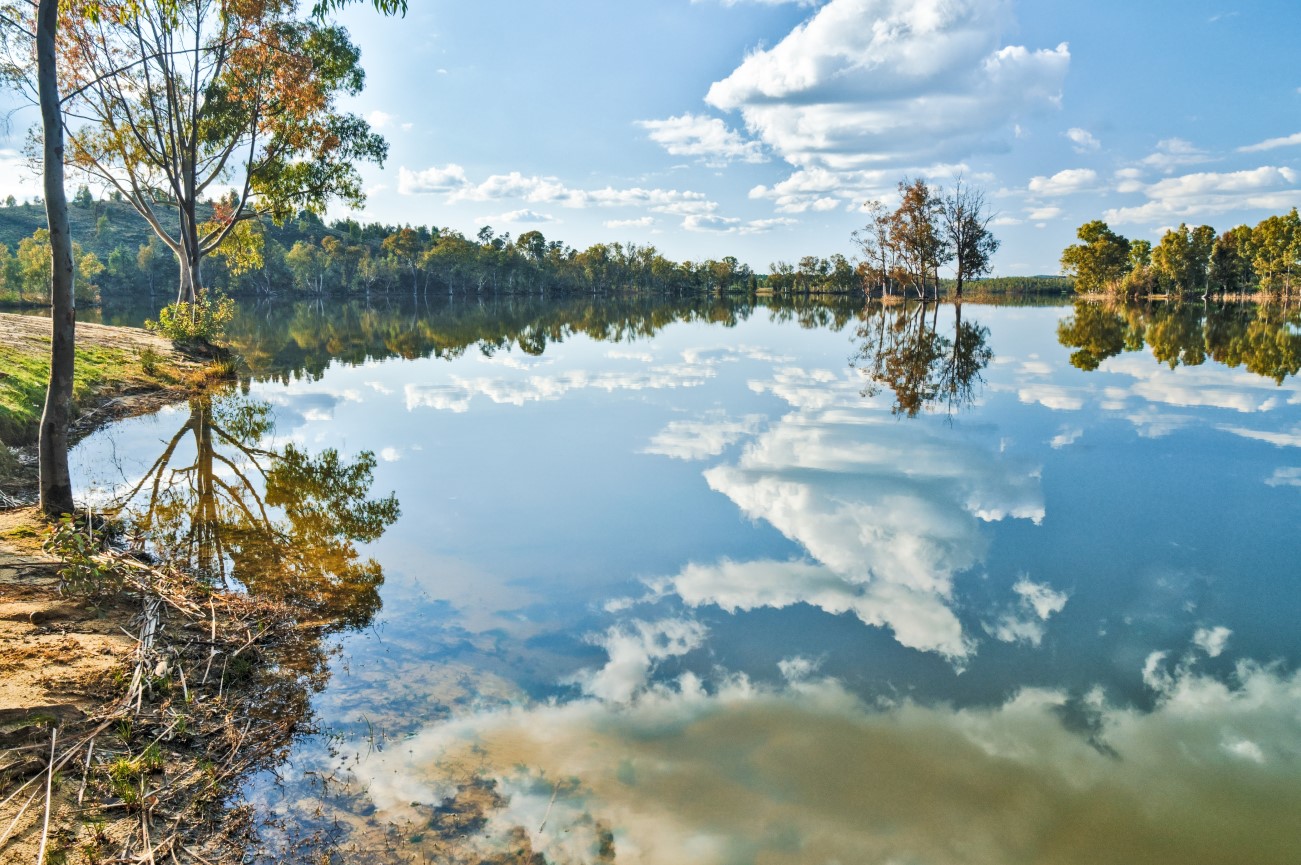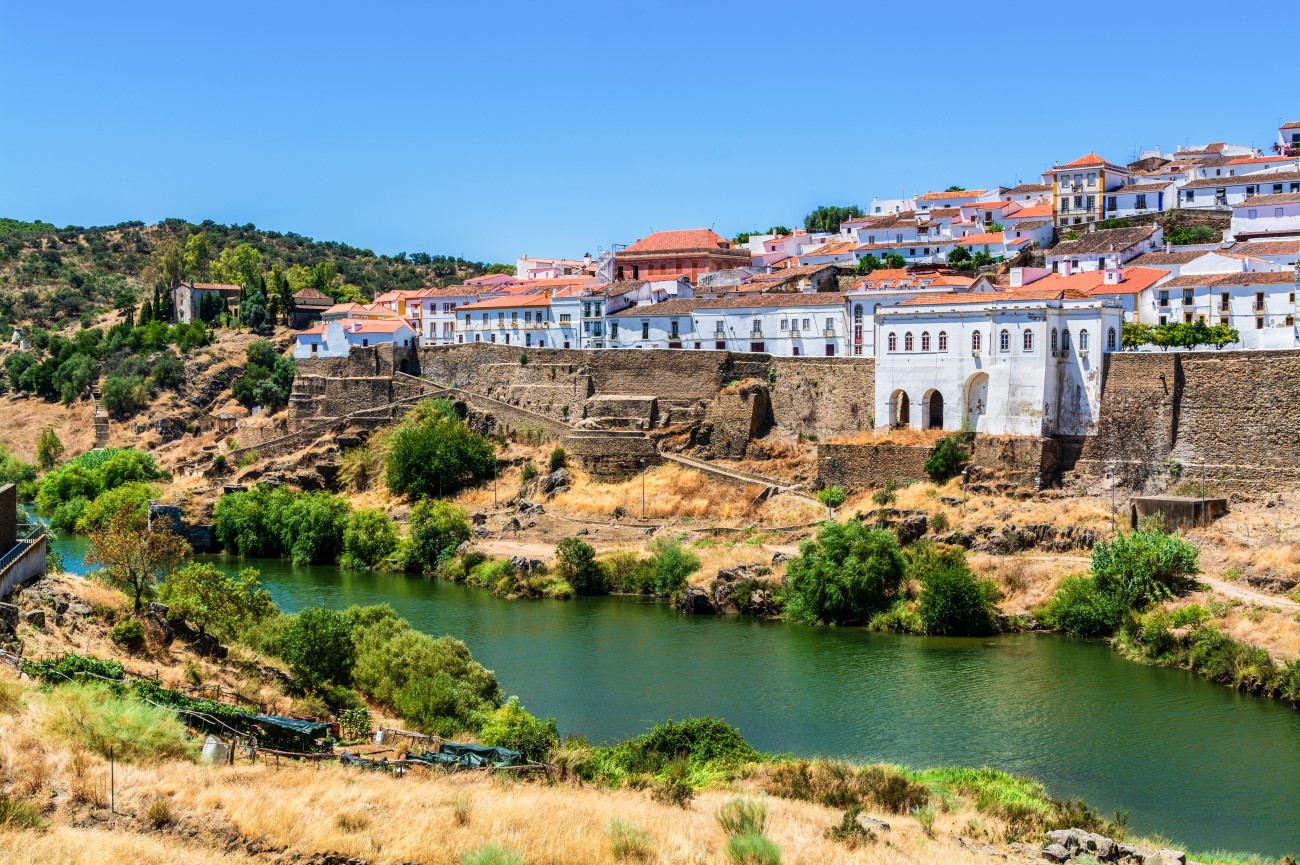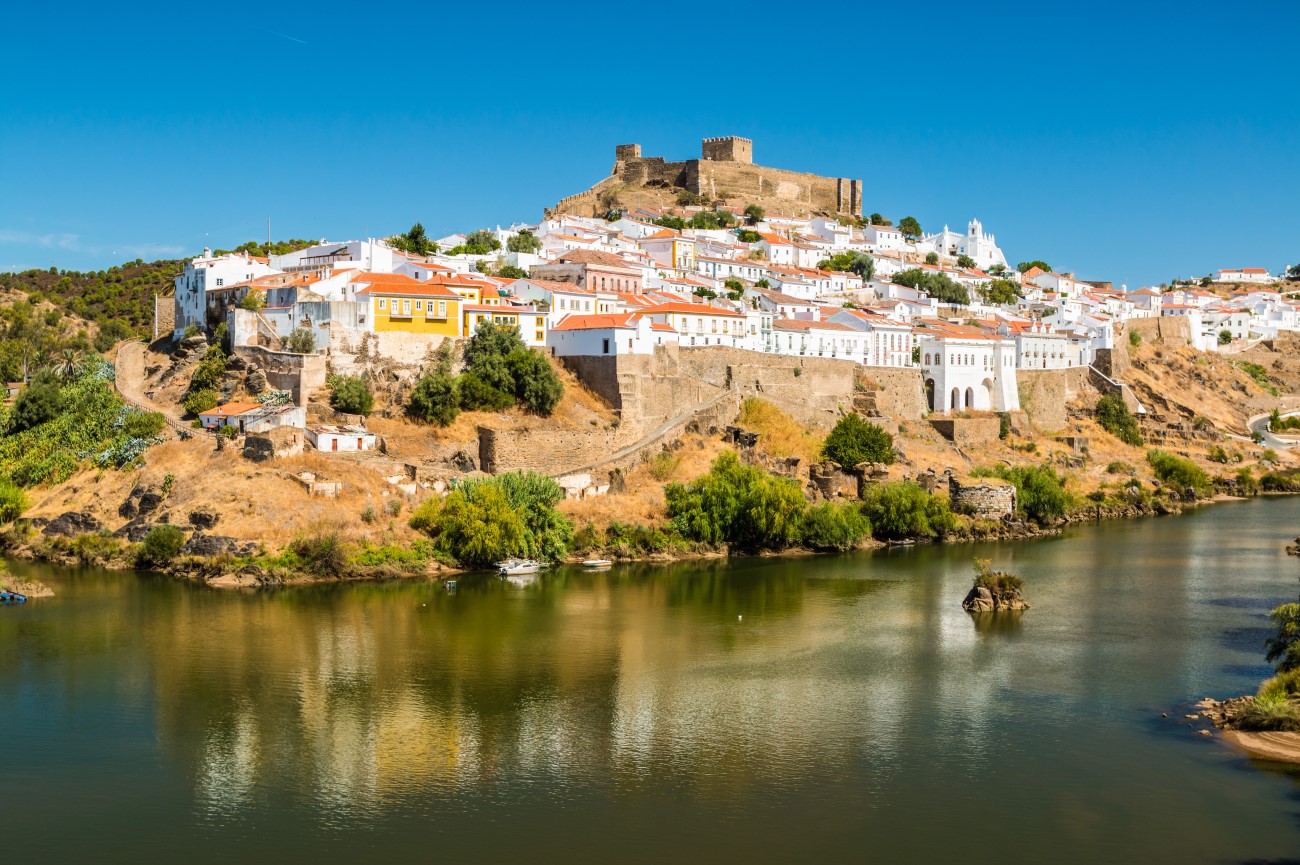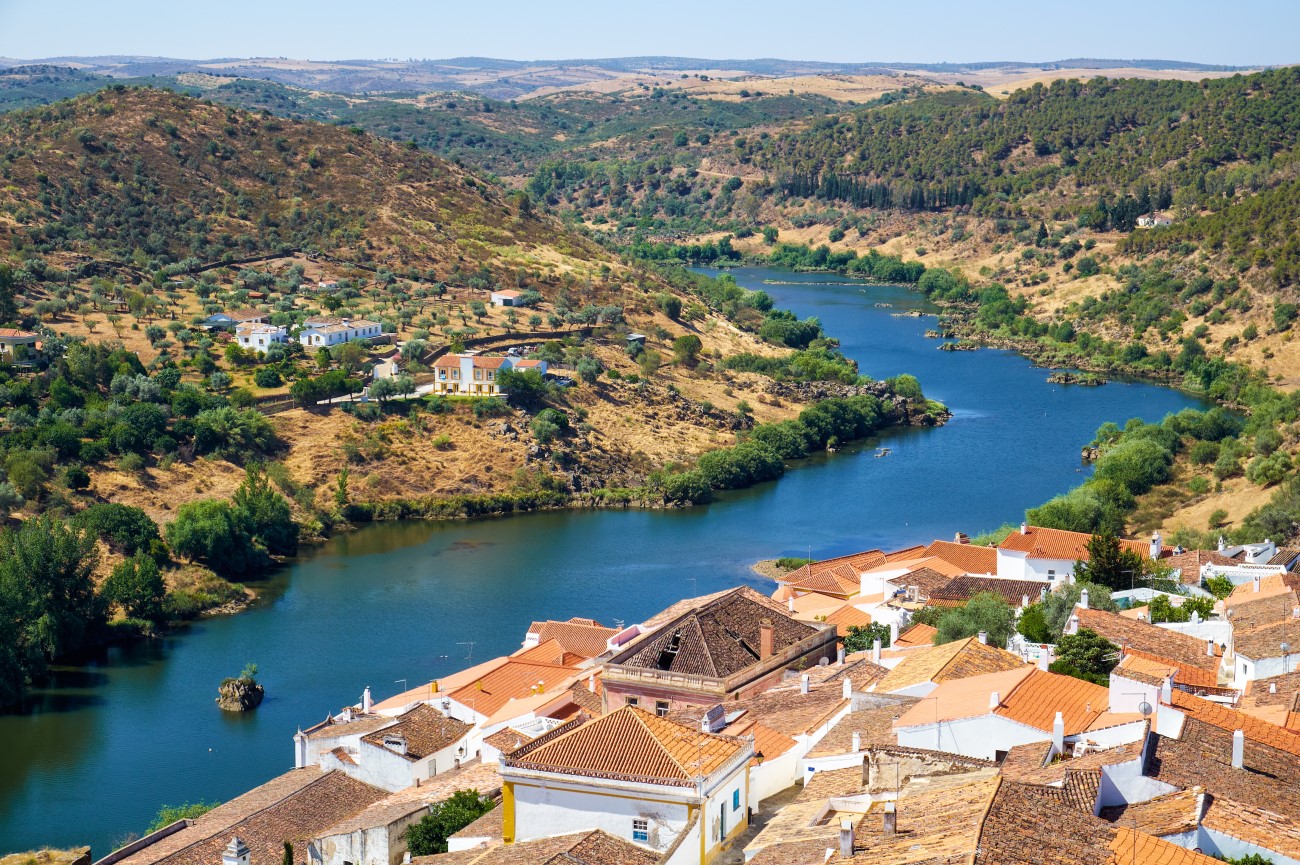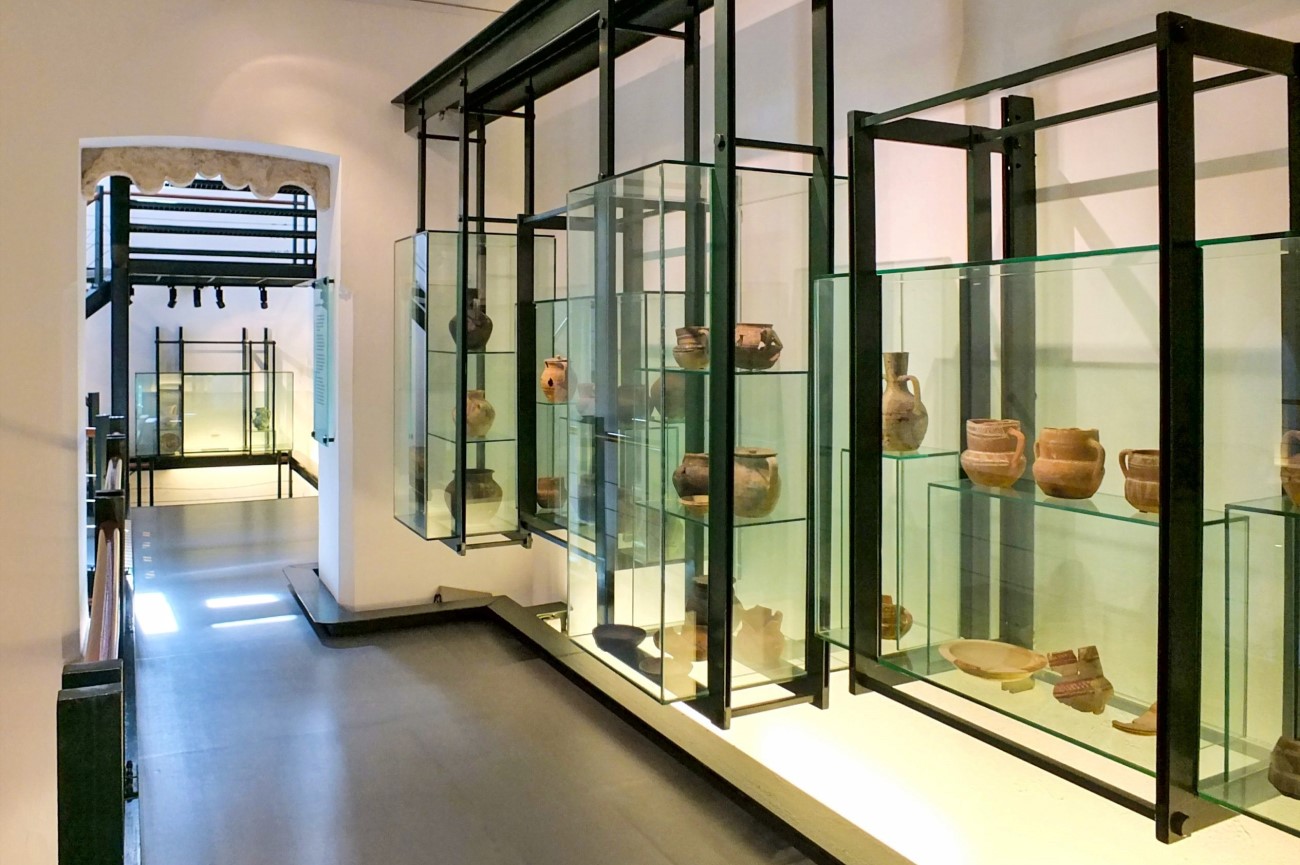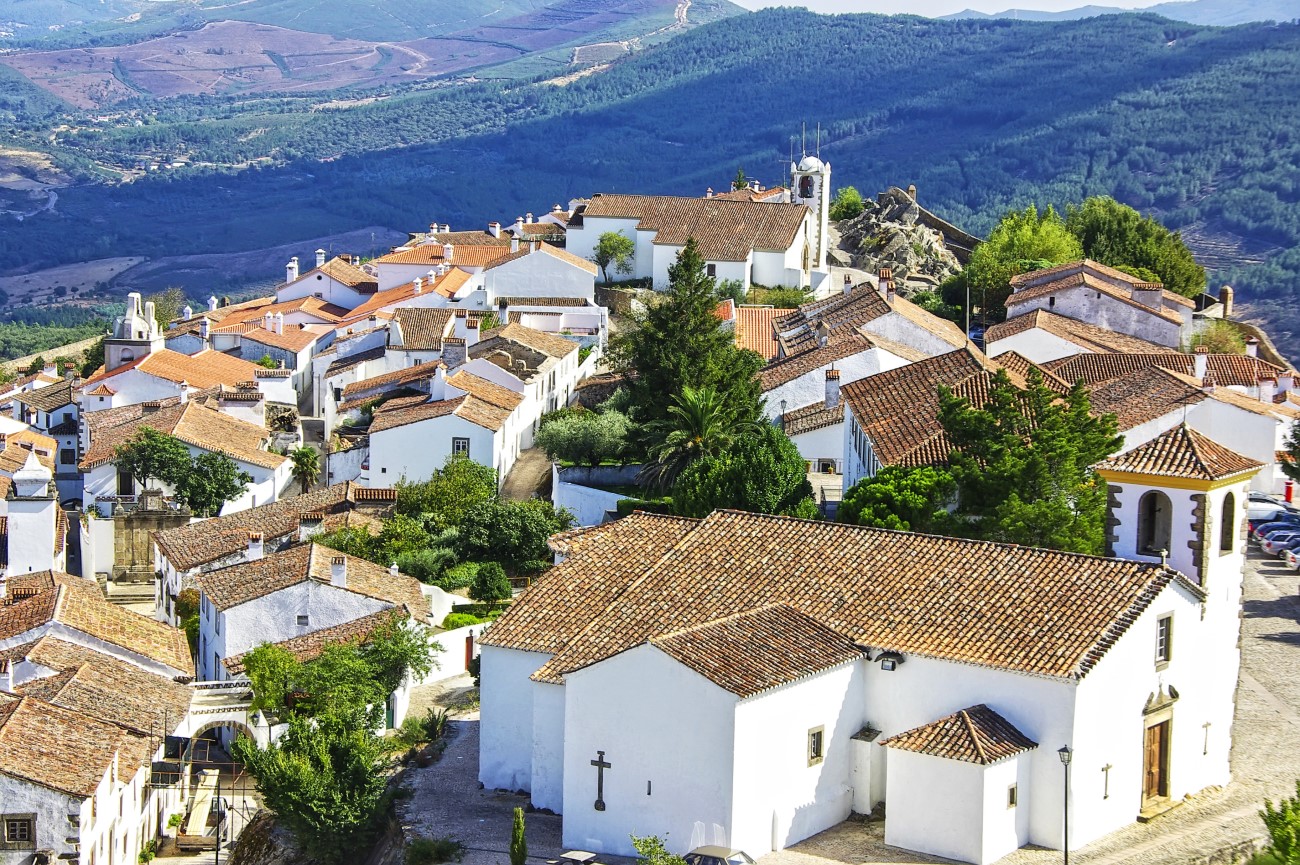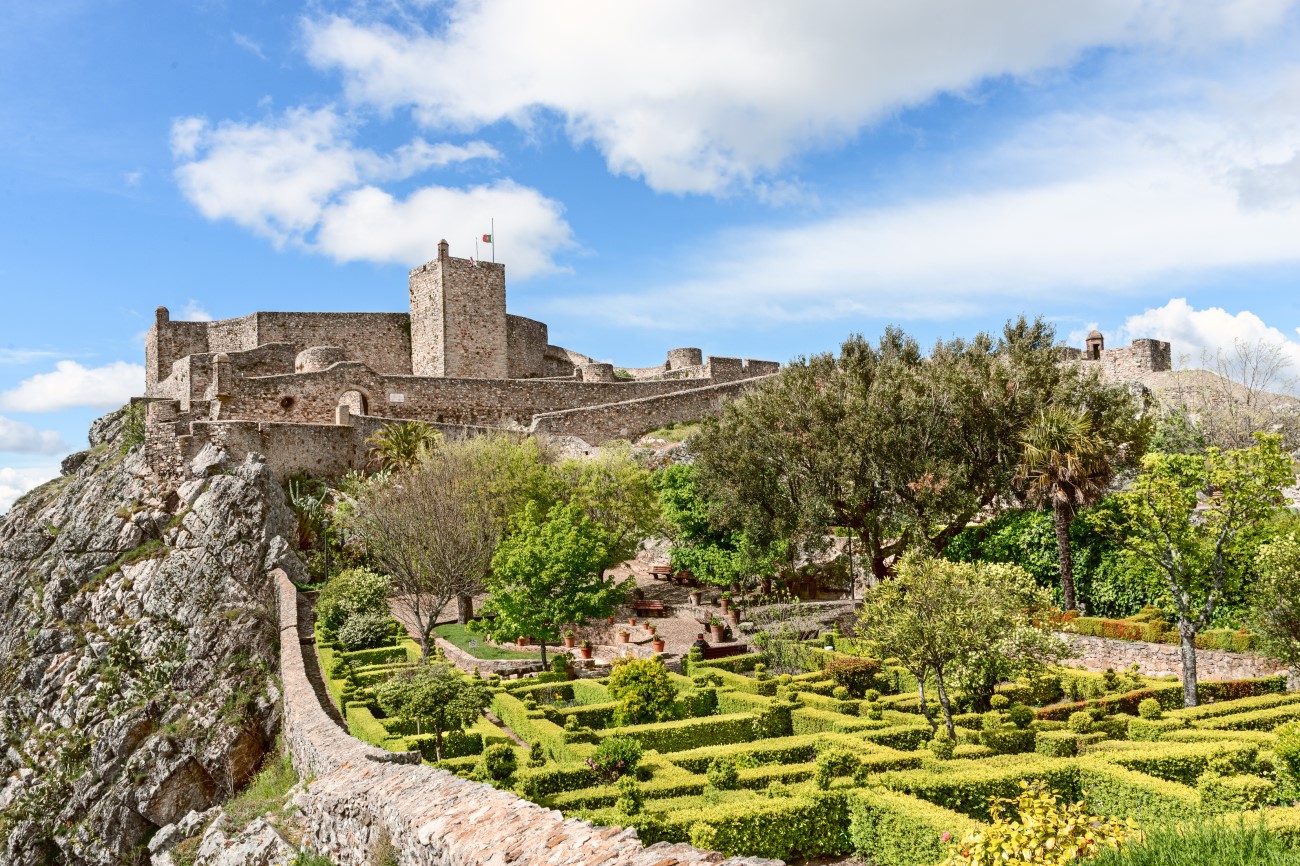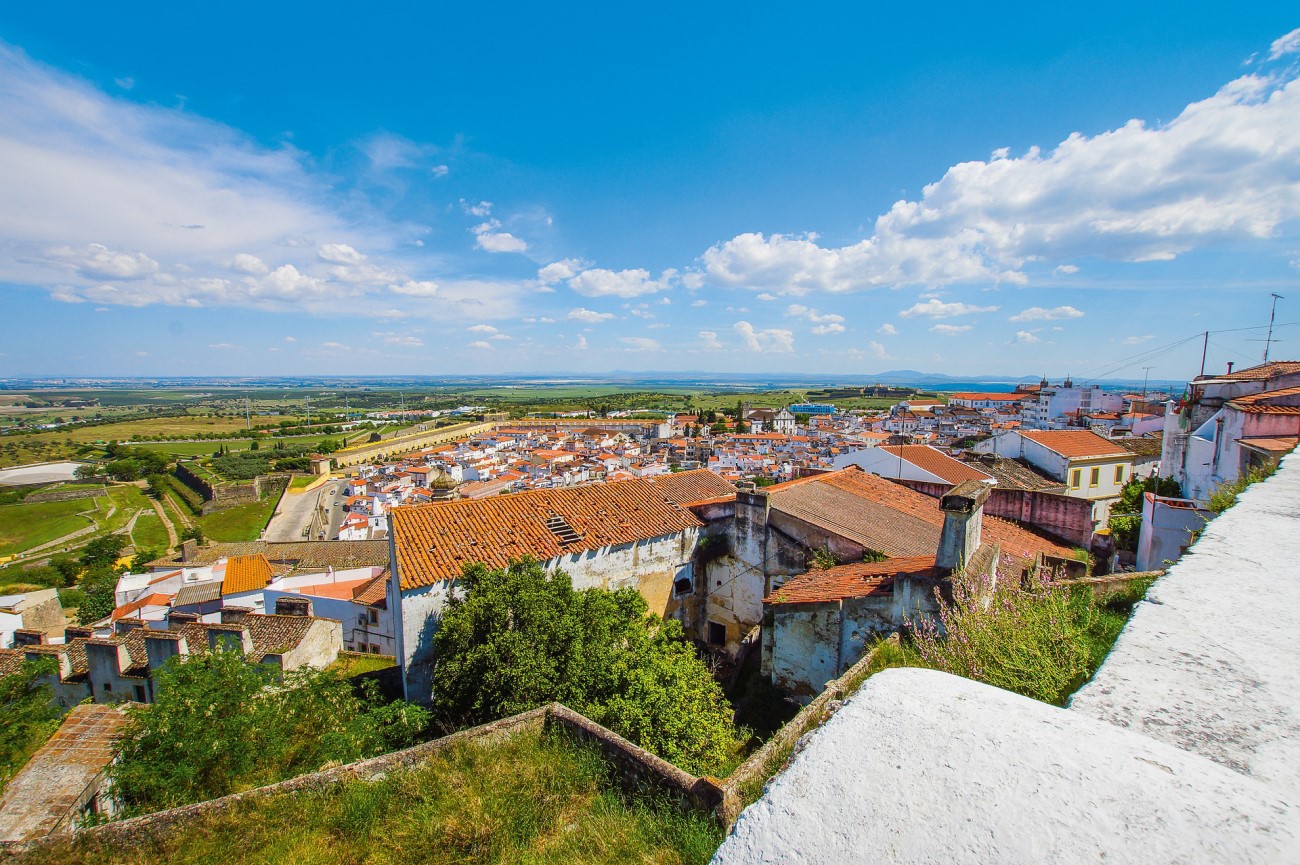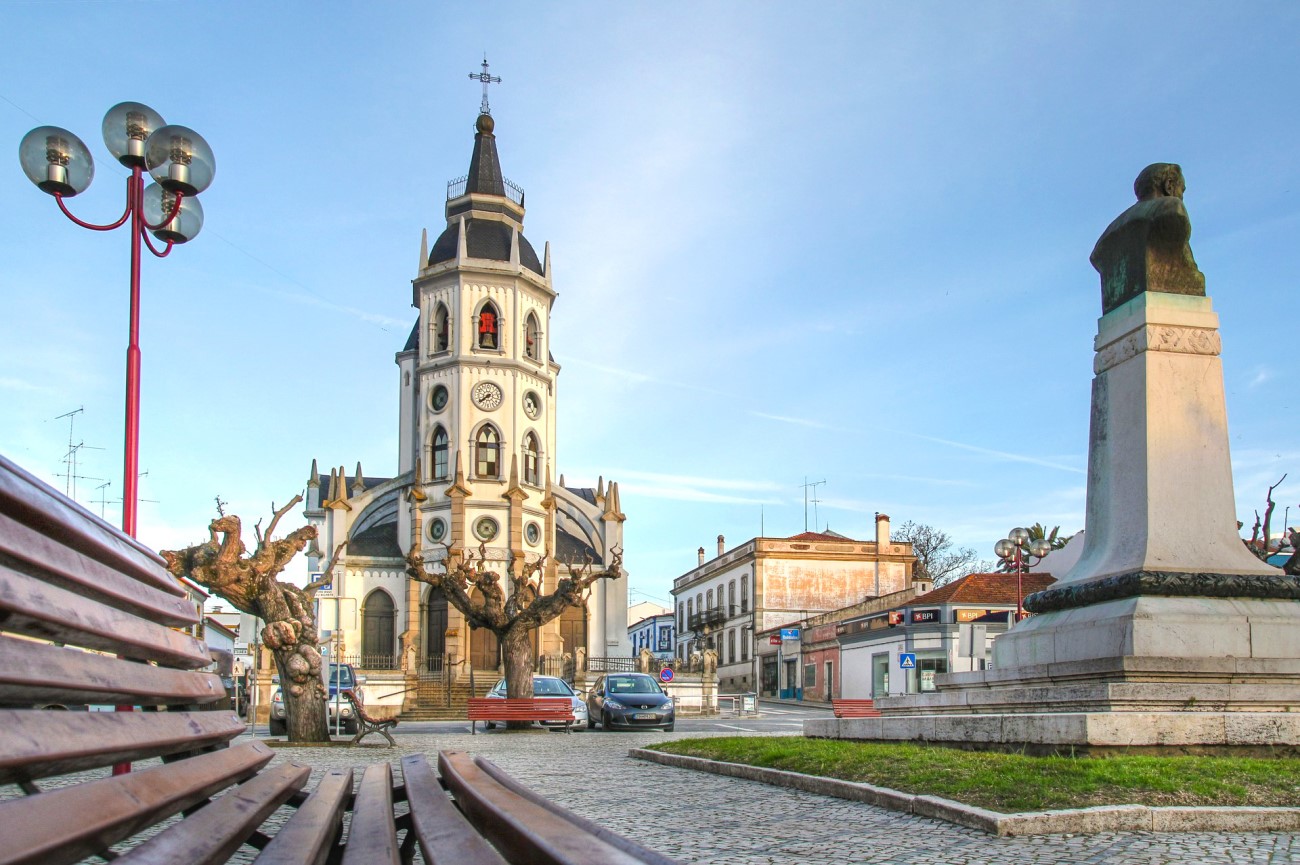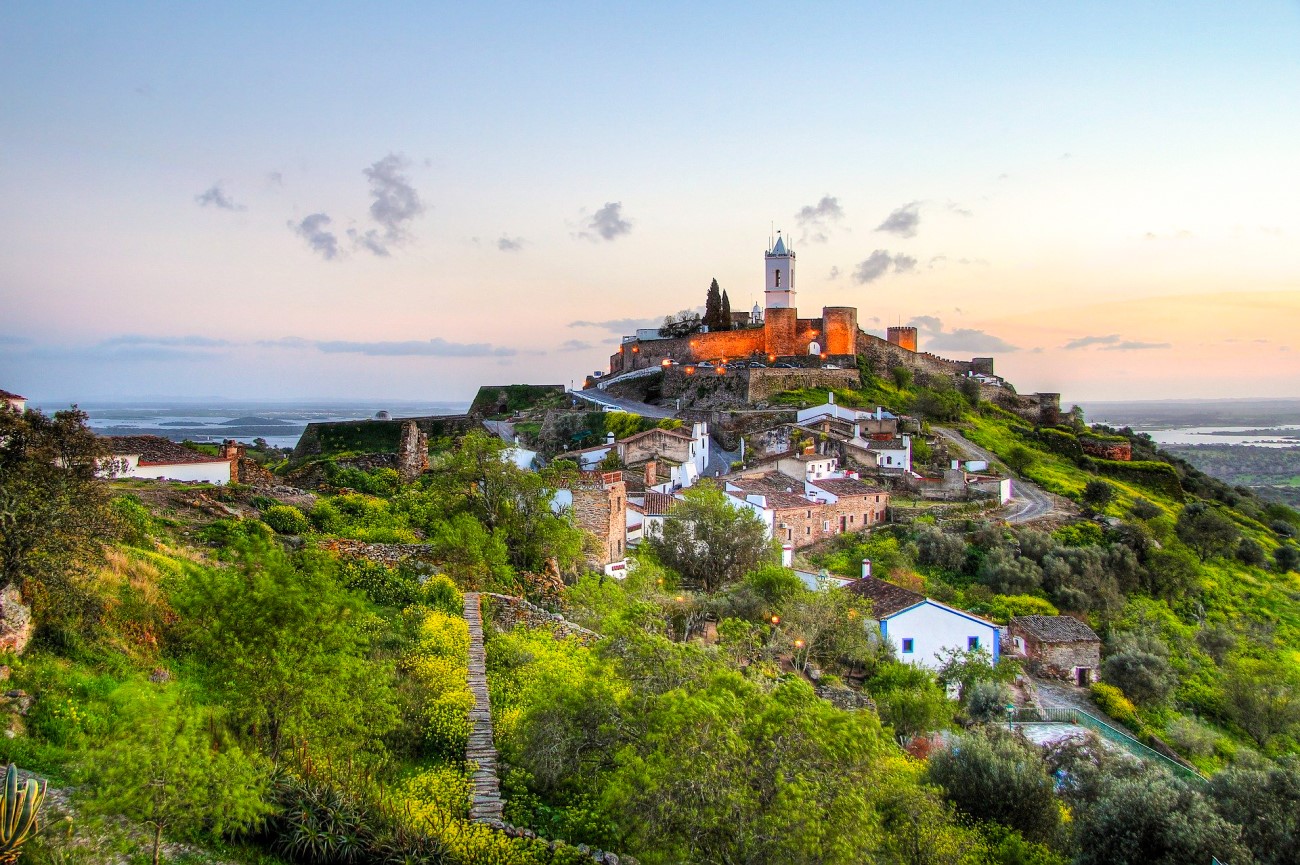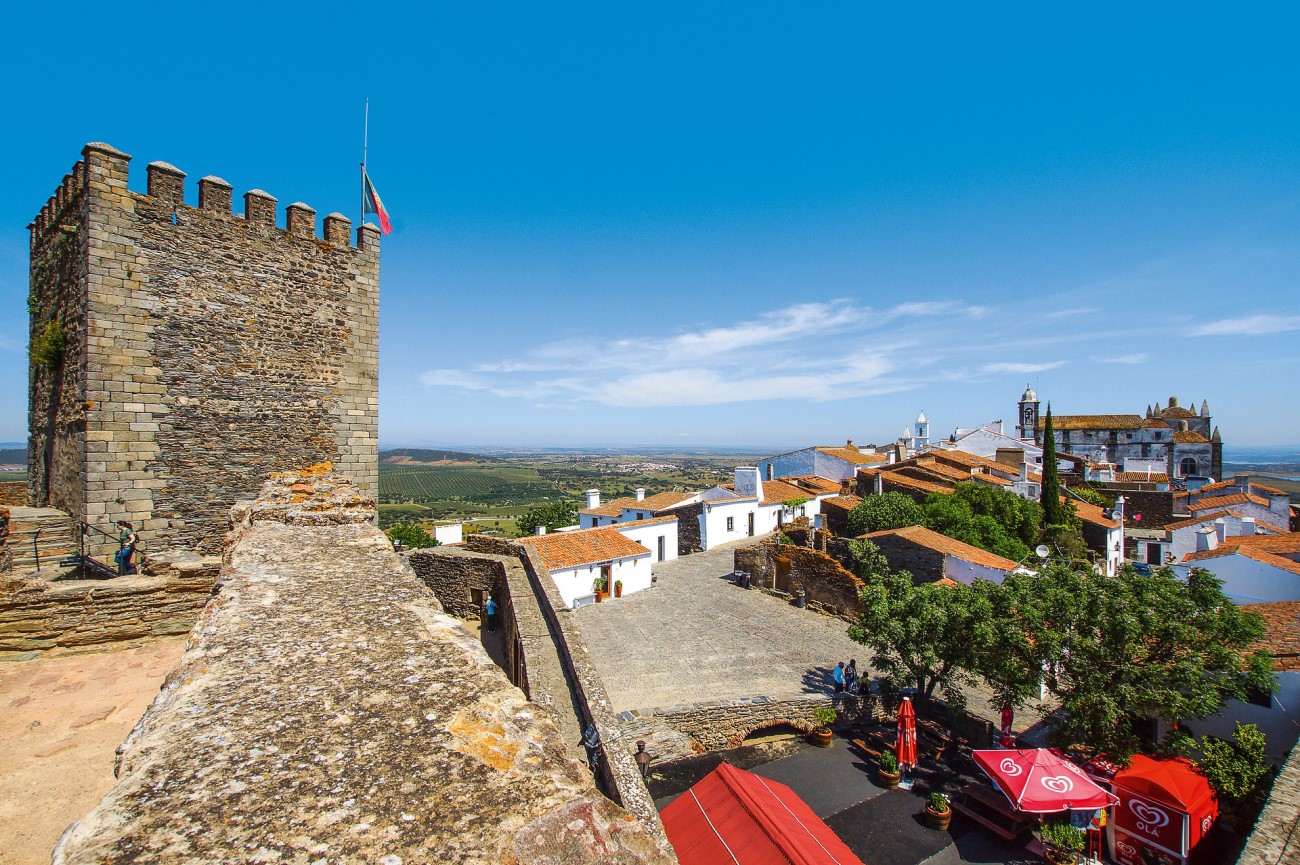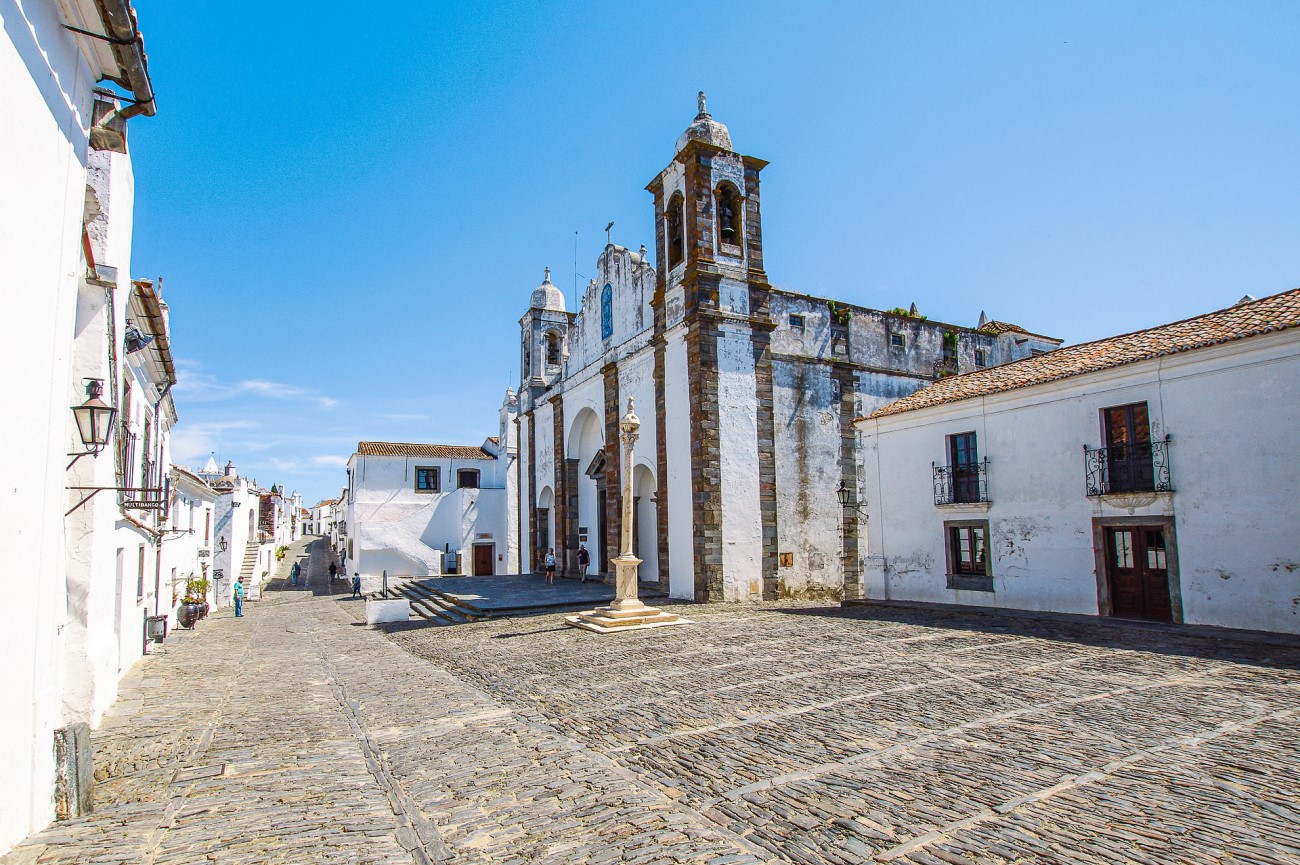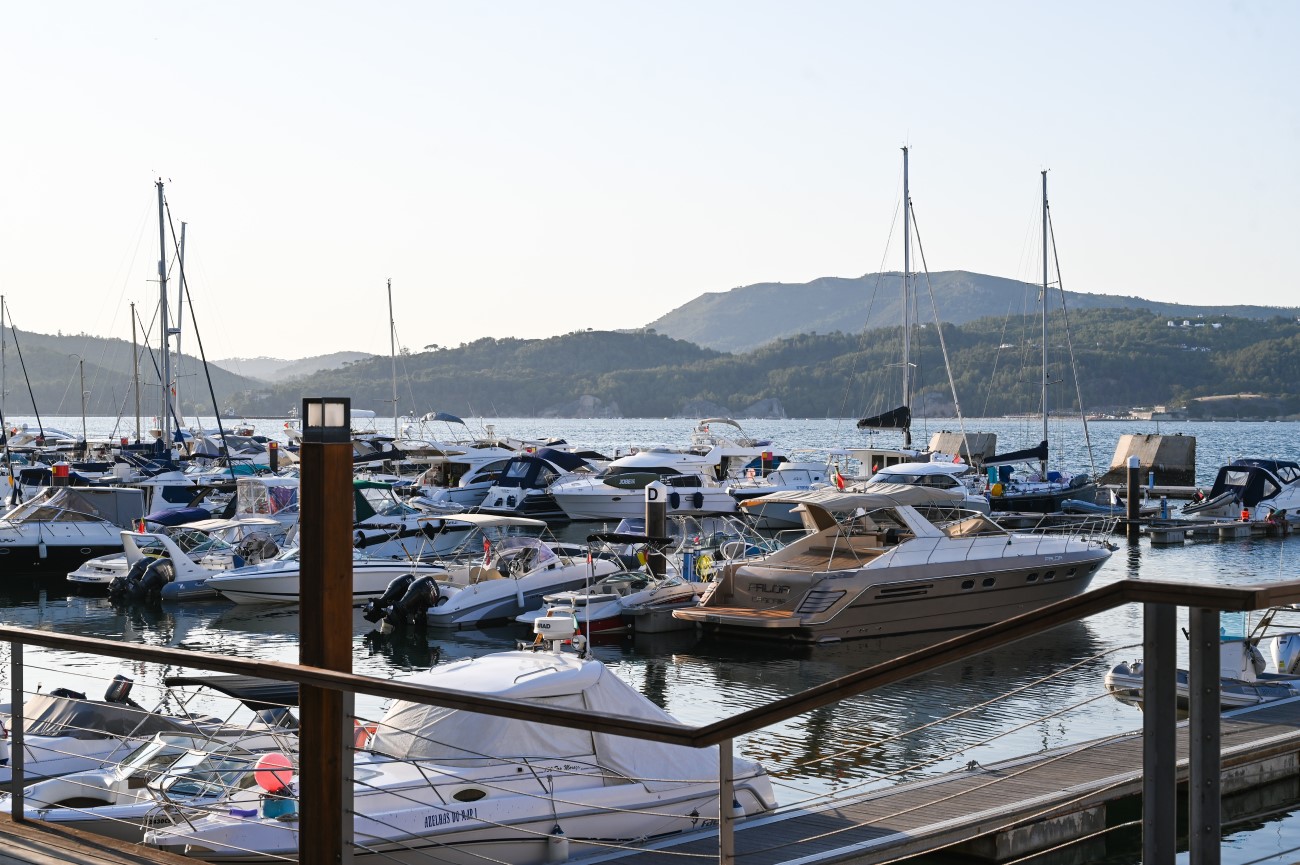Things To Do In the Alentejo Region of Portugal
After visiting Évora, we set out on a road trip through the Alentejo. We drove through small remote villages, climbed up castles, sipped many wine glasses, and ate delicious seafood by the coast. In little less than a week, we explored this region from end to end, and now we’re sharing our Alentejo itinerary with you, so you don’t miss the best bits.
Day 1 - Montemor, Arraiolos, Evoramonte, Estremoz

Morning - Montemor-o-Novo & Arraiolos
From Évora, head west to Montemor-o-Novo and start the day with a wine tasting session at Quinta da Plansel or L’AND Vineyards.
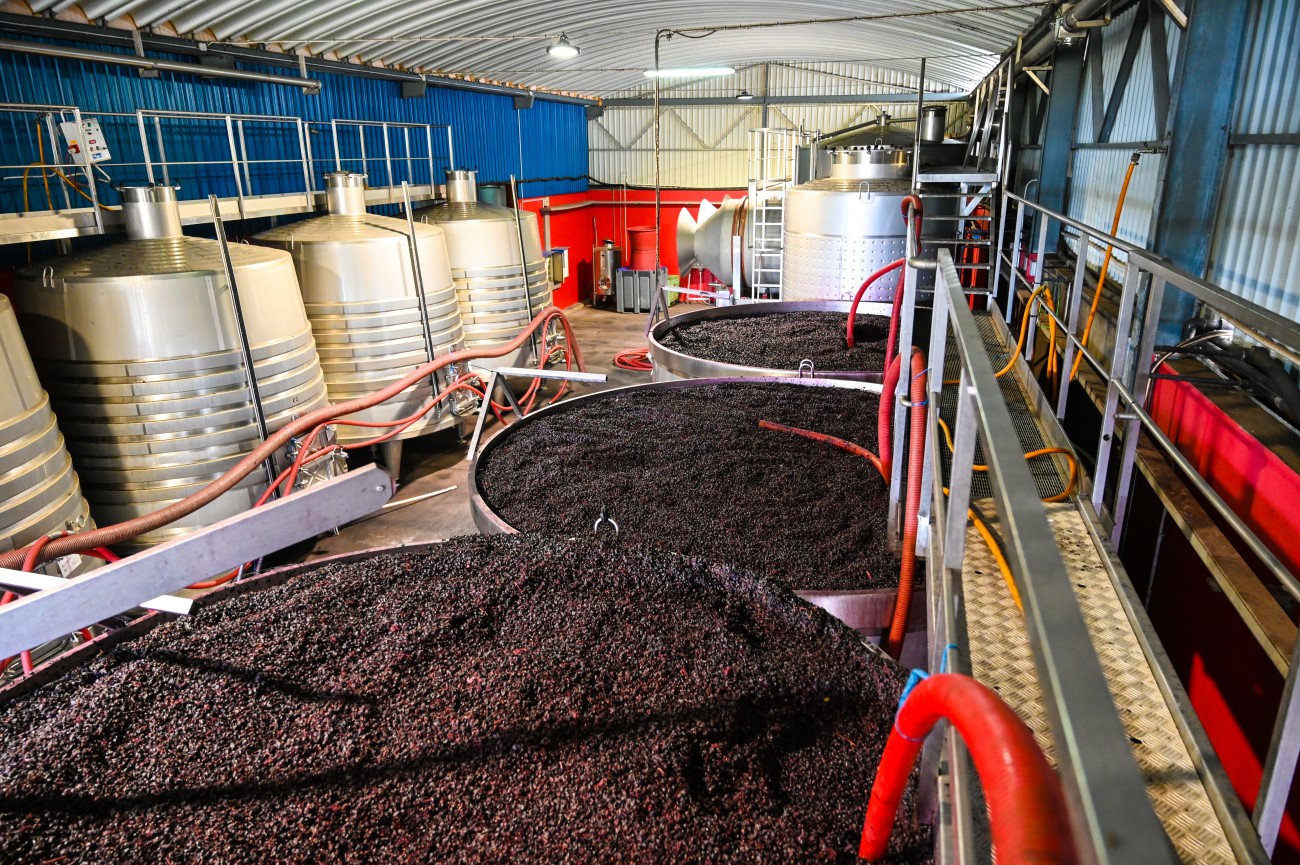 The harvested grapes must be processed ASAP, Quinta da Plansel, Montemor-o-Novo, Alentejo, Portugal
The harvested grapes must be processed ASAP, Quinta da Plansel, Montemor-o-Novo, Alentejo, PortugalThen, make your way to the town centre and visit the castle. Take a walk along the walls and enjoy the panoramic views of Montemor and the yellow plains below.
Continue to Arraiolos, and if you’re up for it, make a stop at Monte da Ravasqueira for another wine tour. Arraiolos is famous for its hand-woven tapestries, but it also has a few interesting sites, like the Convento dos Lóios and the Castelo de Arraiolos, one of the few circular fortifications in Portugal.
If you want to purchase a rug, the street Rua Alexandre Herculano is the best place to go.
You can also visit the Interpretative Centre of Arraiolos for an in-depth history of this traditional craft.
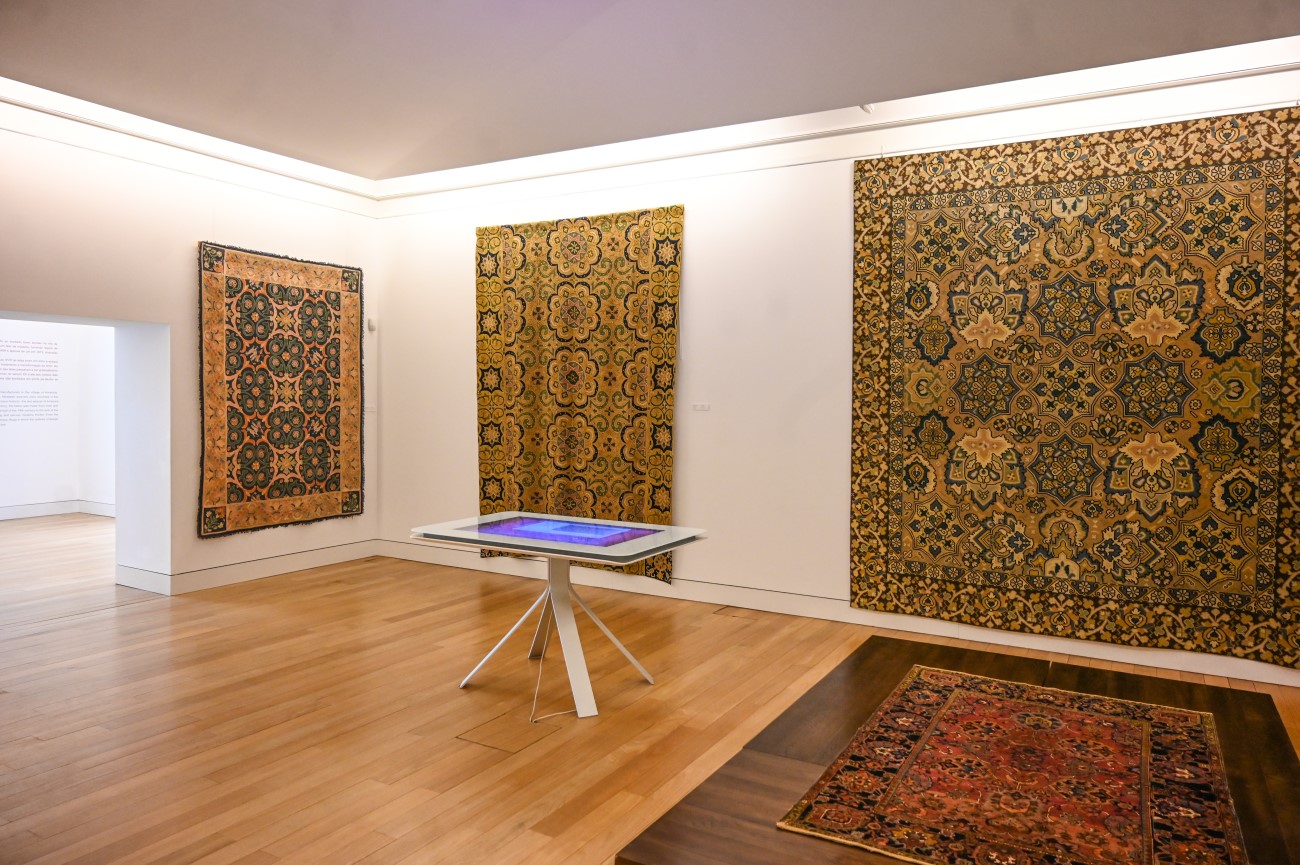 Learn the Arraiolos rug manufacturing techniques at the Interpretative Centre of Arraiolos, Portugal
Learn the Arraiolos rug manufacturing techniques at the Interpretative Centre of Arraiolos, Portugal
Map For The Morning Tour
Afternoon - Evoramonte & Estremoz
As you drive towards Estremoz, it’s impossible not to notice Evoramonte and its imposing castle rising on a hill. In a place with little over 500 residents, the castle is the town’s crown jewel. What makes this stronghold so special is the four cylindrical turrets standing on each corner, which is unlike any other in Alentejo. After exploring the castle, take a couple of minutes to wander around the cobblestone streets, stopping by Celeiro Comum for a handmade souvenir.
Estremoz is larger than Evoramonte, but it still has that small-town vibe. Start your tour in Rossio, a square lined with churches and alfresco cafés. Then take a detour to the shop Irmãs Flores, a little atelier that sells Bonecos de Estremoz, colourful ceramic dolls typical from this region.
The town is also famous for its marble production, and you’ll notice that everywhere you go, especially around the castle area. Towering over Estremoz, the castle has an impressive 27-metre keep covered in marble from top to bottom. Part of the castle got converted into a hotel, but you can still walk inside and explore its surroundings. Facing the building is a marble statue of Elizabeth of Aragon, a 16th-century church and a tiny regional museum, which you can skip if you've already visited the atelier.
Before dinner, squeeze in a visit to one of the local wineries. The closest one is Tiago Cabaço, but there are others further west like João Portugal Ramos and Herdade das Servas. This last one offers the opportunity to participate in the wine harvest, which takes place around September.
Afternoon Tour Map
Where to eat:
- Raiz & Tradição (Montemor) - In a street of plain white buildings, this restaurant stands out with its blue and white façade. It’s a cosy space decorated with wooden ceilings and stone counters. The restaurant serves traditional dishes from the Alentejo, with a contemporary twist in its presentation. It’s worth trying the lamb and the pears with ice cream.
- L'AND Vineyards (Montemor) - Just a few miles from the centre of Montemor, you’ll find L’AND, a Michelin-star restaurant run by Chef José Miguel Tapadejo. Visitors can enjoy a tasting menu with ingredients from the land and the sea. For wine recommendations, make sure to ask the house sommelier.
- República do Petisco (Arraiolos) - This tiny restaurant in the heart of Arraiolos specialises in petiscos , typical Portuguese dishes meant to share. There are only a few tables inside, but when the sun is out, you can grab a seat on the outdoor terrace. It’s often busy, so it’s worth making a reservation in advance.
- Venda Azul (Estremoz) - Venda Azul is a lively restaurant located in the heart of Estremoz. It offers an affordable lunch menu with generous portions made to share. The speciality here is the grilled black pork.
Where to stay:
- L'AND Vineyards - Surrounded by vineyards, this 5-star hotel near Montemor-o-Novo offers two swimming pools, a spa and a Michelin-star restaurant. You can book a wine course here or arrange visits to nearby wineries.
- Convento do Espinheiro - Set just outside of Évora, this is a 5 star hotel housed in a renovated 15th century convent. It offers the 8 hectares of beautiful gardens, indoors and outdoors swimming pools, tennis court, spa, two restaurants, piano bar and a church. The rooms are modern and luxuriously furnished.
- Monte do Freixo - Also part of the L’AND group is this secluded estate with 500 hectares. Here you can relax away from the crowds and enjoy the views over the surrounding countryside dotted with cork trees. Breakfast is delivered every morning, and there’s a pool on-site where you can go for a refreshing swim. Guests also have access to the restaurant and spa of the nearby L’AND Vineyards.
- Royal Cocoa Company Palace - Set in a 19th-century palace, this hotel is a quiet place to stay in the centre of Montemor. It only has four suites and an outdoor swimming pool overlooking the castle. As a bonus, there’s a mini chocolate factory created by the owners, where guests can learn how to make chocolate.
- Pousada Arraiolos - Located a few miles from the centre of Arraiolos, this 4-star hotel occupies a former convent. Facilities include two swimming pools, a tennis court, a restaurant, a spa and a fitness centre. Next to the hotel is a church decorated with traditional azulejos from top to bottom.
- The Place - This family-run B&B is one of the few places to stay in Evoramonte. Set atop a hill, it offers four rooms, all with a view of the castle. The outdoor café is also a great place to relax and watch the sunset.
- Pousada Estremoz - Housed in a 14th-century castle, this hotel is one of the best places to stay in Estremoz. Some rooms include four-poster beds, so you’ll feel like a true royal. It also includes a restaurant, an outdoor pool and a small garden.
Day 2 - Baixo Alentejo

Morning - Beja & Serpa
For your second day, head south and explore the region of Baixo Alentejo. Beja is the main city here, but the smaller towns around it deserve a visit too.
Before reaching Beja, go for a tour in the nearby vineyards of Herdade dos Grous or Herdade da Mingorra.
If you’re staying in the area, it’s worth stopping by Parque da Cidade for a relaxing stroll. Otherwise, you can go straight to the city centre.
It’s here you’ll find the city’s two main attractions: the castle and the Museu Rainha Dona Leonor, also known as the Regional Museum.
Visit the castle first and climb up to the ramparts for the best views of the countryside. Then, go to the Regional Museum, where you’ll find cloisters lined with stunning blue-and-white tiles.
From Beja, drive East towards Serpa. This tiny whitewashed village is mainly famous for its creamy cheese, but there’s much more to do here.
If you want to try the local delicacy, head to one of the cheese shops scattered around town like Queijaria Tradiserpa. Next, follow the route to the castle, passing by the Torre do Relógio, one of the oldest clock towers in Portugal.
The castle has an unusual entrance with two large rocks leaning against each other. There’s been a fortress here since the Roman era, but the present structure dates back to the 14th century. From the castle’s battlements, you can watch over the village and its narrow streets. There’s also a museum inside with a collection of items such as Roman funerary stones.
After visiting the castle, you can take a look at the exhibitions at Serpa’s modern art gallery or stop by the Museu do Relógio, where you’ll find thousands of clocks ranging from the 17th to 20th century.
Exiting Serpa, you can drop by Herdade do Vau for a little wine tasting session. Besides the vineyards, this estate also includes a hotel, so you can always come back and spend the night here.
Morning Tour Map
Afternoon - Mértola
On the way to Mértola, you’ll find numerous attractions. First up is Pulo do Lobo, a small waterfall overlooking the Guadiana River. Access to Pulo do Lobo can be done from Serpa, via the village in Vale de Poços.
A few miles down from the waterfall is the Praia da Tapada Grande, a river beach with thatched umbrellas and a picnic area. Besides swimming, you can rent a canoe or grab a drink at the beach bar which opens during the summer.
Nearby, it’s worth visiting the Mina de São Domingos, a remarkable mining territory that is now in ruins.
Mértola is perhaps the most picturesque town in theAlentejo. Set on the banks of the Guadiana river, this medieval town is home to a collection of museums and a castle with spectacular views.
From Roman ruins to an Islamic residence, Mértola’s museums cover a variety of eras. The first one you’ll see when you approach the town is the Museu Paleocristão, which features the remains of a paleo-Christian basilica and a Visigothic cemetery. Before continuing the tour of museums, there are few places where you can stop on the way.
There’s the
Oficina de Tecelagem, a weaving workshop where you can buy handmade wool
products and further up is the parish church which used to be a mosque.
Once inside, follow the passage in the back, which leads to a tiny
museum.
Next to the church are the open-air ruins of an Islamic
neighbourhood and the castle of Mértola. Rising above the town, the
castle offers incredible views over the river and beyond. You can walk
along the walls for free or pay a small fee and climb up to the tower.
When you’re done exploring the castle, get back to the route of museums, passing through Casa Romana, a Roman house set inside Mértola’s town hall, followed by the Núcleo de Arte Sacra and the Núcleo Islâmico. To end the afternoon, you can take a leisurely boat trip along the river.
Map Of The Afternoon Tour
Where to eat in Baixo Alentejo:
- Os Infantes (Beja) - A few steps from Beja’s Regional museum, you’ll find this cosy restaurant with a vaulted interior. It serves traditional Portuguese dishes, including codfish and the Alentejo’s favourite—the Iberian Pork. There are also some vegetarian options.
- Molhó Bico (Serpa) - The owners of Molhó Bico transformed an old wine cellar in Serpa into a cosy Alentejo restaurant. Here you can try a variety of local dishes such as lamb stew, Iberian pork and the traditional bread soup known as açorda .
- O Tamuje (Mértola) - Whether you’re stopping in Mértola or just passing through, you can grab a meal in this local restaurant. Highlights include the tomato soup and game dishes like wild boar and rabbit. For dessert, order the sericaia, which comes with mead produced in Mértola.
Where to stay in Baixo Alentejo:
- Pousada Beja - Set in an old convent, this 4-star hotel offers the best location to explore Beja’s main attractions. The hotel includes a spa, an outdoor swimming pool and extensive gardens where you can bask in the sun. Guests can also take advantage of the restaurant and bar, which features a snooker table.
- Herdade dos Grous - A few miles away from Mértola, you'll find this relaxing estate with an artificial lake. Here, you can enjoy several activities like horseback riding, birdwatching, and touring the vineyards.
- Herdade do Vau - Overlooking the Guadiana river, this is a quiet place to stay near Serpa. Guests can enjoy the outdoor pool and take a tour of the vineyards that surround this rural estate.
- Cantar do Grilo - Nestled in the countryside, this guesthouse is minutes away from the Vale do Guadiana Natural Park. Breakfast includes regional ingredients, and there are a few facilities to prepare snacks during the day. Guests can swim in the outdoor pool and relax under the olive trees dotted around the property.
Day 3 - Alto Alentejo

Morning - Portalegre
As you drive towards the north of the Alentejo, you’ll notice a change of scenery. Instead of flatlands with oak trees and vineyards, you’ll find villages and castles surrounded by lush green hills.
This region is known as Alto Alentejo, and Portalegre is its capital. Set amidst the São Mamede Natural Park, Portalegre is a small city with a thriving textile industry.
One of the main attractions here is the Museu de Tapeçarias, a museum solely dedicated to Portalegre tapestries. The ground floor covers the city’s history and shows the step-by-step process of making this local craft, from tracing a design to the traditional weaving techniques. Upstairs, there are numerous rooms with tapestries on the walls inspired by the work of national and international artists. Some are pretty abstract, while others are more representational, like the Lisbon series by Carlos Botelho.
After the museum, you can pay a quick visit to Portalegre’s castle. The original building dates back to the 13th century, but in 2016 a new wooden structure was added, so it looks slightly modern. There’s a small exhibit on the first floor, but if you want to see the tower, you’ll need to step outside. It will only take a few minutes to capture it, as there’s a restricted section for visitors to walk.
Besides these two places, there’s not much else to visit in the centre of Portalegre, so you can get back on the road to Marvão. This charming village lures visitors with its medieval castle and breathtaking mountain views.
There are a few spots worth checking on the way to Marvão, including the Alentejo Sculpture Park and the Roman villa of Ammaia. The first one is part of the Quinta do Barrieiro, a rural estate nestled amid the São Mamede mountains. Even if you’re not staying here, you can visit the surrounding park. Here, you’ll find a collection of contemporary sculptures designed by the Portuguese artist Maria Leal da Costa. Don’t be surprised if you bump into a few sheep on the way out, after all you’re in the middle of the countryside.
A bit further north is the Roman villa of Ammaia. Dating back to the 1st century BC, this villa was occupied by the Romans for several centuries. While you can only see a few ruins today, there’s a video on-site which shows how Ammaia might have looked like back in its glory days.
Once you’ve seen the ruins, you can continue to the town of Portagem. Set on the banks of the river Sever, this town is a popular meeting spot in the summer. Besides the natural swimming pool, there are several sports facilities and riverfront cafés where you can grab a drink. There’s also a Roman bridge here which is considered the oldest toll road in Portugal.
Afternoon - Marvão & Castelo de Vide
From Portagem follow the N359, and you’ll end up in the heart of Marvão. Park the car outside Porta Este and then walk the rest of the way to the castle. You can stay on the cobblestone path, or climb up the walls and enjoy the mountain views.
As you walk, keep your eyes peeled for the castle, which sits on the edge of a rocky outcrop. Before you enter, you can wander around the gardens or visit the Museu Municipal, a small museum set inside a church which features items from the Paleolithic age to more modern days.
Built around the 13th century, the castle of Marvão has one of the most beautiful settings in Alentejo. Visit the cistern by the entrance and then walk around the battlements to relish the views once again.
After the castle, you can continue exploring the narrow streets of Marvão, and if you feel like it, grab a coffee or a glass of wine at one of the many open-air cafés.
Besides wine, the Alentejo is also a region of olive oil. A few miles east from Marvão, you can visit the Lagar-Museu António Picado Nunes, a space that pays tribute to this beloved ingredient. The tour includes an overview of the history of the region, a visit to the olive groves, and a brief explanation of how to make olive oil. To end the tour, the owners offer an olive oil tasting paired with other regional products.
Another thing you can do in the area is the Rail Bike Marvão. The train is no longer working here, but you can pedal over the tracks connecting the towns of Marvão and Castelo de Vide. Make sure to bring comfortable wear with you because the minimum journey takes around two hours.
To end your day in Alto Alentejo, head to Castelo de Vide. This pocket-sized village sticks out with its whitewashed houses clinging to the hills of the São Mamede Natural Park. Overlooking the village stands the castle with its imposing stone walls. You can start your tour here and then explore the Jewish quarter, also known as Judiaria. For a long time, Castelo de Vide was home to a community of Jews that escaped the inquisition from Portugal and Spain. Hiding amidst the trail of houses is a 13th-century synagogue featuring a mihrab and a museum sharing the history of Jews in the area.
Once you’ve seen the old town, walk back to the centre, passing through the Fonte da Vila, a 16th-century marble fountain. End your tour of Castelo de Vide at Praça de Dom Pedro V, the town’s main square, where you’ll find the town hall and a baroque church.
That covers the main attractions in the centre, but there’s one more place to see further out. If you leave the village and follow the N246-1 towards the west, you’ll end up at the Castelo de Vide train station. It’s where the route of Rail Bike Marvão ends, but even if you don’t cycle from Marvão, you should come here to admire the stunning tile panels covering the station’s old building.
Day 3 Tour Map
Where to eat in Alto Alentejo:
- Solar do Forcado (Portalegre) - This place is just a few steps from Portalegre Castle. Inside are a series of posters and collectables related to the region's bullfighting traditions. The restaurant specialises in meat dishes, particularly wild bull.
- Mil Homens (Marvão) - If you’re heading to the pool in Portagem, you can stop for a meal at Mil Homens. Open since 1967, this family-run restaurant serves delicious dishes such as lamb stew and sarapatel soup.
- A Confraria (Castelo de Vide) - Confraria is a tiny restaurant with friendly owners located in the village of Castelo de Vide. The menu features a variety of game dishes, like the wild partridge with roasted potatoes and the hare with white beans.
Where to stay in Alto Alentejo:
- Cabeças do Reguengo - Set atop a hill overlooking the São Mamede Mountains, this rural estate is surrounded by vineyards, olive groves and a variety of fruit trees. It offers three apartments and eight rooms, which include a balcony and a small kitchenette. There's also a swimming pool, a mini gym and a wine cellar which doubles as a bar. Depending on the season, guests can participate in several activities, including grape harvesting, picking olives or getting eggs from the chicken coop.
- Dom Dinis Marvão - Just a stone's throw away from the castle of Marvão, this hotel offers nine rooms decorated with wooden furniture and white linen. Some rooms feature castle views, while others face the mountains. There's a communal room with books and board games, but the highlight here is the rooftop terrace with panoramic views and a jacuzzi which opens during the summer.
- Quinta do Barrieiro - Set amid the São Mamede Natural Park, this rural estate combines art and nature. It offers several houses ranging from one bedroom to three bedrooms. Each of them has a living room, a kitchenette, and incredible views of the surrounding mountains. There's also a pool, a natural lake and a park featuring metal sculptures designed by the artist Maria Leal da Costa.
- Quinta das Lavandas - Vast lavender fields make up the scenery of Quinta das Lavandas located 4 km away from Castelo de Vide. There are seven rooms available here with decor inspired by the surrounding flora. Guests can enjoy the outdoor swimming pool, rent a bike or even book horse riding lessons.
Day 4 - Corval, Vila Viçosa, Elvas, Monsaraz

Morning - Corval, Vila Viçosa & Elvas
Start your morning at São Pedro do Corval, a tiny village renowned for its ceramics. There are over 20 pottery workshops to visit around here, making it one of the largest artisan communities in Portugal. You can come here to see the potters at work or buy a souvenir from the shops, which include anything from plates to decorative tiles.
From Corval, make your way north to Vila Viçosa. Like Estremoz, Vila Viçosa is also a marble hub, and you’ll find traces of it all over the town.
Once you get to Vila Viçosa, you can begin your tour by the castle. The two circular towers mark the entrance to the castle’s grounds, which were once the home of the Dukes of Bragança before they moved to Paço Ducal. Beyond the walls is a series of houses, a church and the castle which now contains the museums of archaeology and hunting.
A few steps from the castle is the Terreiro do Paço, a large square that vaguely resembles the one in Lisbon, but without the crowds. Facing the square is the Paço Ducal, a 16th-century palace with a stunning marble façade. Inside, you’ll find a series of paintings and antique furniture posing alongside tiled walls and painted ceilings. The palace has a few sections which you can visit separately, including a collection of Chinese porcelain, a carriage museum and the armoury room.
After Vila Viçosa, continue driving to Elvas, a fortified town located in the east of the Alentejo.
On the way to the town, you can stop by Forte da Graça. This old military structure is one of the most unique fortifications in Elvas, with its walls forming the shape of a star. At the highest part of the fortress stands a yellow building known as Casa do Governador. From this vantage point, you can capture the town and admire the views of the countryside below.
As you approach Elvas, you’ll inevitably pass by Aqueduto da Amoreira. Completed in the 17th century, this large aqueduct is one of the town’s landmarks and stretches for nearly 8 km.
Before entering the medieval walls, you can visit the Forte de Santa Luzia, another star-shaped fortress which features a small military museum. From there, head straight to the old town, and follow the route to the castle. The castle was initially established by the Moors, but the present structure dates back to the 13th century. There’s also a bar here where you can stop for a quick drink.
After wandering around the castle, head to the Cathedral, passing through Largo Santa Clara. In the middle of this square is a 16th-century pillory which was once the site of inquisition trials.
The imposing cathedral was also around during that era, but it got renovated in the 18th century, so it includes Baroque elements like the chapels and the golden organ.
From Elvas, you can go straight to Monsaraz or, if you want, you can make a small detour to Campo Maior to visit the vineyards of Adega Mayor. Amid the vineyards is a stark white building designed by Portuguese architect Siza Vieira, which stores the wine barrels. You can do a simple tour of the estate or combine your visit with a wine workshop or a picnic.
Morning Tour Map
Afternoon - Reguengos de Monsaraz & Monsaraz
Coming from Elvas or Campo Maior, drive down to Reguengos de Monsaraz. This is the home of Herdade do Esporão, one of the most famous producers of the Alentejo wine. They offer guided tours several times per day, but make sure to book in advance to guarantee a place. Beyond the vineyards, there’s also a restaurant, a wine bar and a shop where you can buy bottles to take home. Even if you miss the tour, you can always order a glass of wine by the bar and pair it with a delicious cheese board.
Another option is to visit Ervideira, a smaller vineyard between Reguengos and Évora that also provides wine tours and tastings.
After Reguengos, continue to the Amieira Marina, a small harbour set along the Alqueva Lake. In the summer, this area is a great spot for watersports like canoeing and paddle. You can even rent a boat for fishing or take a cruise along the lake with friends. If you prefer to relax, there’s a river beach nearby with a big sandy stretch offering views of the surrounding olive groves.
From here, head to Monsaraz, a tiny hilltop village enclosed by medieval walls. Park the car outside the walls and then continue on foot, passing through one of the ancient gates. Porta da Vila is the main entrance, but three other gates give access to the village as well.
If you walk alongside the walls, you’ll soon spot the Monsaraz Castle. Established in the 14th century, this castle was at the frontline of numerous battles between Portugal and Spain. Today its empty grounds offer the best viewpoint over the Alqueva Lake.
Once you’ve seen the castle, take a stroll around the village, stopping by the Igreja Nossa Senhora da Lagoa to admire the marble tomb of a Knight Templar. Opposite the church is an 18th-century pillory that is also worth capturing.
A few miles outside the village is the Praia Fluvial de Monsaraz, another river beach where you can unwind after a tiring day of sightseeing.
At
night, don’t miss the Observatório do Lago Alqueva. This local
observatory is the best place for stargazing in the Alentejo. Every night,
the centre organises two-hour astronomical observations that teach you
about constellations and allow you to observe the stars and faraway
galaxies with the help of a telescope.
Afternoon Tour Map
Where to eat:
- Taverna dos Conjurados (Vila Viçosa) - A few steps away from the Paço Ducal in Vila Viçosa, this restaurant offers a variety of Alentejo dishes inspired by old family recipes. It has a rustic interior with wood furniture and arched ceilings featuring exposed bricks. Specialities include lamb ribs and regional wines, mainly from Borba.
- Herdade do Esporão (Monsaraz) - Herdade do Esporão is one of the most famous vineyards in the Alentejo. Before or after visiting the vineyards, you can enjoy a meal at their Michelin-star restaurant. As they use seasonal ingredients, the menu is always changing. You can ask for the Menu Carte Blanche to get a tasting menu curated by the chef. The restaurant is only open for lunch, and it's usually quite busy, so make sure to book a table in advance.
- Taberna do Adro (Elvas) - The owners of Taberna do Adro took over an old Alentejo house and turned into a family restaurant. As you enter, you can't help but notice the walls decorated with colourful ceramic plates and the exposed wooden beams in the ceiling. As for food, the focus here is petiscos, small dishes to share topped with traditional desserts like sericaia.
Where to stay:
- Pousada Vila Viçosa - You'll find this historic hotel in the heart of Vila Viçosa. Set in a 16th-century convent, it features 11 comfortable bedrooms, most of which offer private balconies facing the hotel gardens or the Terreiro do Paço. There's also an outdoor swimming pool and a restaurant serving typical Alentejo cuisine. In the summer, it's possible to grab a drink under the cloisters.
- Alentejo Marmoris - Located near the Paço Ducal, this hotel stands out with its opulent marble decor. The rooms include marble bathrooms, and some provide a private terrace. There's a restaurant on-site, as well as two swimming pools and a spa with several treatments.
- São Lourenço do Barrocal - Nestled between olive groves and vineyards, this rural estate has been in the same family for over two centuries. It's a quiet place to stay near the village of Monsaraz. You can book a room or an entire cottage, which can take up to six people. The estate provides several activities, including wine tastings, horse riding and mountain biking. There's also a spa and a restaurant on the premises.
- Vila Galé Elvas - Set within the medieval walls of Elvas, this 4-star hotel offers 79 rooms, including seven suites. During their stay, guests can enjoy a meal in one of the two restaurants and go for a swim in the indoor or outdoor pool. The hotel also features a spa which contains a sauna, a Turkish bath and a jacuzzi.
Day 5 - Comporta, Alcácer do Sal, Vila Nova de Milfontes

Morning - Troia & Comporta
Enjoy your last day in the Alentejo relaxing by the coast. From Troia to Odemira, a trail of seaside towns and beaches await you in this sun-drenched region.
Whether you’re coming from Lisbon or Évora, it will take you about the same time to reach Troia. This sandy peninsula stands amid the Sado Estuary and the Atlantic, and it’s a meeting point for dolphins. You can drive there from Évora, passing through Comporta or take the ferry boat from Setúbal.
From peaceful beaches to golf courses and casinos, Troia is full of entertainment options. You can spend a few hours here, relaxing by the beach and then take a boat trip from the marina to observe the dolphins. On the way back, visit the Roman ruins, a large settlement on the east end of the peninsula established around the 1st century BC.
After exploring Troia, you can stop by Comporta. This is one of the Alentejo’s coastal gems, a tiny village with a wide sandy stretch and plenty of seafood restaurants. Take a stroll around Praia da Comporta on foot or ride a horse along the dunes with Cavalos na Areia. While you’re in the area, you can also do a tour of Herdade da Comporta, a wine estate set between rice paddies. They offer tours of the vineyard throughout the day, as well as wine tasting sessions.
Afternoon - Vila Nova de Milfontes & Alcácer do Sal
In the afternoon, continue on the road to Vila Nova de Milfontes. This seaside town is a bit more lively than Comporta, especially in the summer, when surfers and sunbathers flock its pristine beaches.
On the way to Milfontes, you can stop by the Lagoa de Santo André. Stretching for 15km along the coast, this is a large natural reserve made up of two wetlands. The protected area offers the perfect setting for birdwatching and numerous water activities like canoeing and windsurfing.
Further down, there are a few towns that deserve a visit, such as Sines and Porto Covo. Both of them feature a vast selection of beaches, but the best ones are Praia da Samoqueira in Sines and Praia Grande in Porto Covo.
It’s in Porto Covo that the Costa Vicentina begins, a wild coastal stretch that extends from the Alentejo to the tip of the Algarve. The beaches here attract a crowd of surfers, and the high cliffs are a favourite spot for hikers and cyclists. There are many trails along the Costa Vicentina, both for beginners and experienced walkers.
It takes less than 30 minutes to get from Porto Covo to Vila Nova de Milfontes. Once you get here, you can wander around the centre, passing by the Igreja Nossa Senhora da Graça and Largo de Brito Pais to take in the views of the Mira River.
The closest beaches to the centre are Praia da Franquia and Praia do Farol, and you can easily get there on foot from Largo de Brito Pais. There’s also another beach across the river called Praia das Furnas which you can reach by boat if you don’t have a car.
Further away, you can visit Praia do Malhão or Praia do Pessegueiro. This last one is on an island, so you’ll also need a boat to get there.
Beyond the beaches, there are many things you can do in Vila Nova de Milfontes. You can take a surf lesson, follow the coastal trails of Costa Vicentina or kayak along the Mira River. If you have time, it’s worth extending your stay to make the most of this region.
From Vila Nova de Milfontes, drive up to Alcácer do Sal, the last stop of this Alentejo tour.
Located along the Sado river, Alcácer do Sal is an old fishing town with a few historical sites. Rising above the town is a Moorish castle, offering panoramic views of the river and the rice fields growing along its edge.
Part of the castle was converted into a hotel, but even if you’re not staying here, you can go inside and walk along the ramparts. Next door, you can visit the Cripta Arqueológica, an Archaeological museum containing items from the Iron Age to the 19th century.
After the tour, head down to the riverfront and end the day with a stroll along the Avenida João Soares Branco. You can spend the night at the hotel in the castle or go back to one of the coastal towns.
Map of Day 5 Tour
Where to eat in the Alentejo Coast:
- Alento (Vila Nova de Milfontes) - As you make your way to Praia das Furnas, you can enjoy a meal at Alento. Set inside an old primary school, this local restaurant serves contemporary-style meals inspired by the local cuisine. It serves fresh seafood and most dishes are prepared in a wood-burning stove.
- Porto Santana (Alcácer): Facing Alcácer’s riverfront, this rustic restaurant serves a mix of regional dishes. Highlights include the burras estufadas (pork cheek stew) and the filetes de peixe galo (dory fish fillets).
- Dona Bia (Comporta) - If you want to go for a meal in Comporta, head to Dona Bia. This local restaurant specialises in seafood, fresh grilled fish and rice dishes.
Where to stay in the Alentejo Coast:
- Pousada Alcácer - Overlooking the Sado river, this 4-star hotel occupies the medieval castle of Alcácer do Sal. The rooms feature simple decor with some offering river views or a private balcony. Breakfast is included, but there's also a restaurant and a bar for other meals. Outside, guests can enjoy the swimming pool or climb up the old castle walls that surround the garden.
- Sublime Comporta - This stunning nature retreat is only a few miles away from the coast of Comporta. Within the estate, there are 23 rooms and villas with terraces and private pools. There are several restaurants and bars on-site, as well as a spa and a gym.
- Vermelho Melides - This luxurious hotel in Melides wows visitors with its bold decor mixing frescoes, tiles and antique furniture. Each of the thirteen rooms has a different character. Some include rare pieces selected by French designer Christian Louboutin. Guests have access to a spa, an Indian lounge, a heated outdoor pool, and a restaurant serving regional dishes. It’s also worth wandering through the hotel gardens curated by French landscape artist Louis Benech, whose portfolio includes the Versailles gardens.
- Herdade do Amarelo - This secluded estate is a great place to stay in Vila Nova de Milfontes. It offers six types of suites, which include hot tubs and mountain views. Guests can enjoy the hiking trails across the property and take advantage of the spa and the salt-water swimming pool.


